You already know that birders are an odd bunch, but you may not know that they are even more so on New Year’s Day. This is the day that a brand new year list starts and with it all kinds of eccentric behaviors. Birders often report to one another what their first bird of the new year is. Some, like me, squint when looking out the windows in the morning so that first bird might be a bright red Cardinal and NOT the dreaded House Sparrow. (Mine was a Crow this year–ick). Some birders go flying out of the gate (and all across the state) to put up a massive total of species on that first day as if to tell all others who aspire to be the top birder, “Don’t even think about it.” I’m not sure where Duluth power-birding couple, Larry and Jan Kraemer, fall on the spectrum, but they were out birding on 1 January. And they sent shock waves through the entire Midwest birding community with a jaw-dropping confirmation of Scott Wolff’s suspected Ivory Gull.
No, no, this couldn’t be…I had just finished writing a recap post of 2015 where I concluded by saying I wanted to mellow out my birding in 2016. But on the other hand, HOLY SMOKES I’VE GO TO GET TO DULUTH!! To the uninformed, the Ivory Gull is from the high Arctic, the land of Polar Bears and Santa Claus, and has only been to Minnesota a handful of times. It looks like Minnesota and Wisconsin Birders have been good this year because Santa dropped off quite a present in Canal Park.
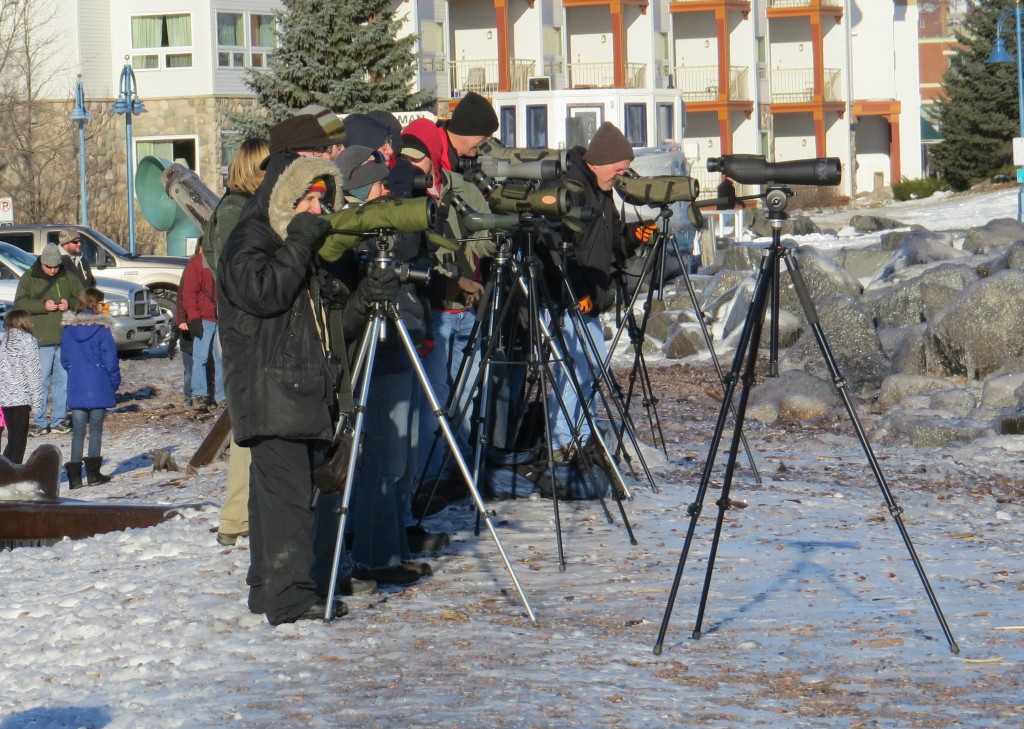 Willmar, of course, sent its own small delegation of eager birders to the Great Birder Assembly. Joining me in the pursuit of a shared, epic lifer were Randy Frederickson and Joel Schmidt. The gathering also gave my yearly and life birder lists a boost.
Willmar, of course, sent its own small delegation of eager birders to the Great Birder Assembly. Joining me in the pursuit of a shared, epic lifer were Randy Frederickson and Joel Schmidt. The gathering also gave my yearly and life birder lists a boost. Here’s what all the fuss is about:
Here’s what all the fuss is about:
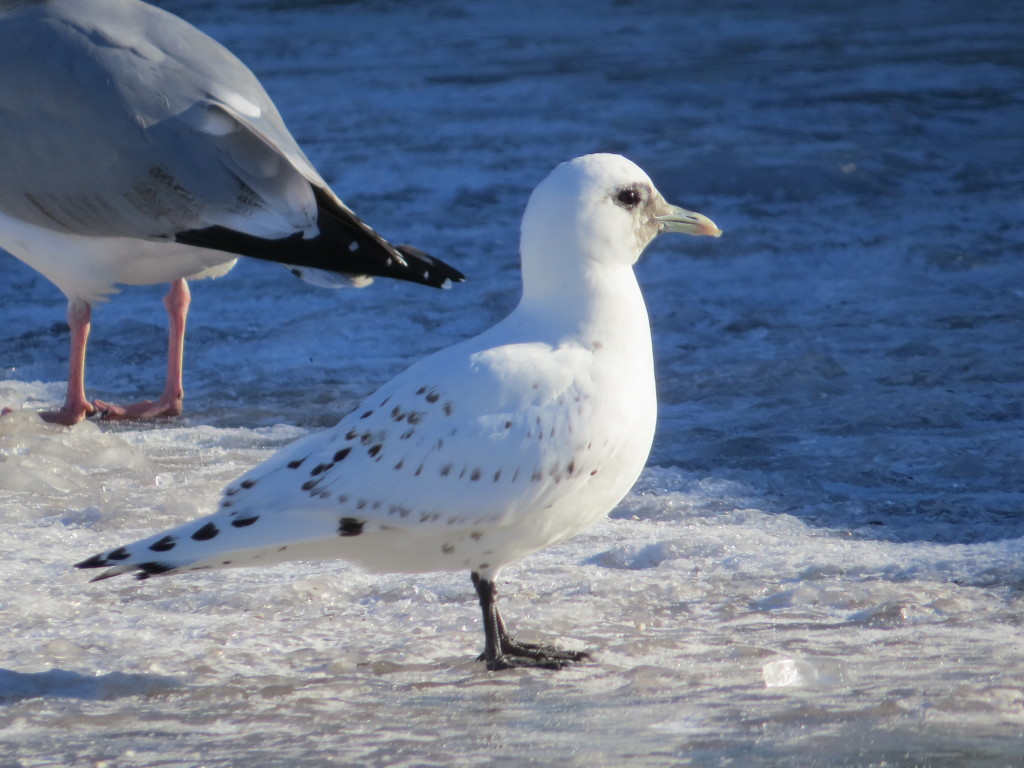
What I noticed immediately about this striking, immature bird was the black mottling on the back and wings of this immaculately white bird and how this black/white combo resembled the plumage of a Snowy Owl or a white-phase Gyrfalcon–all birds from the far north.
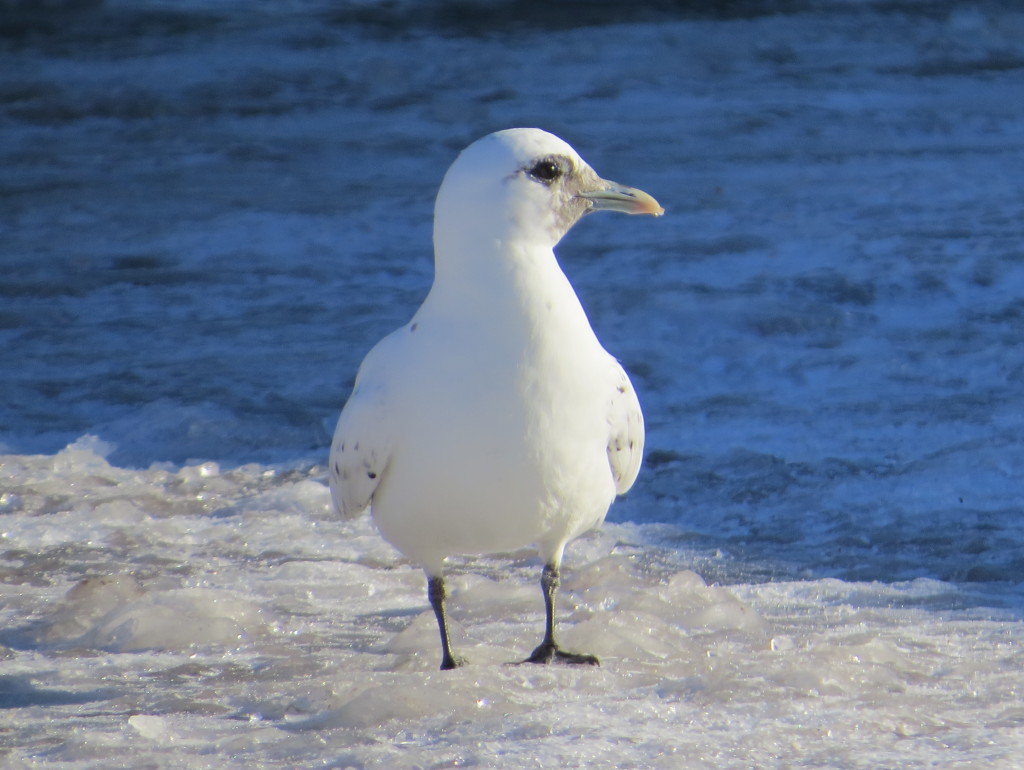
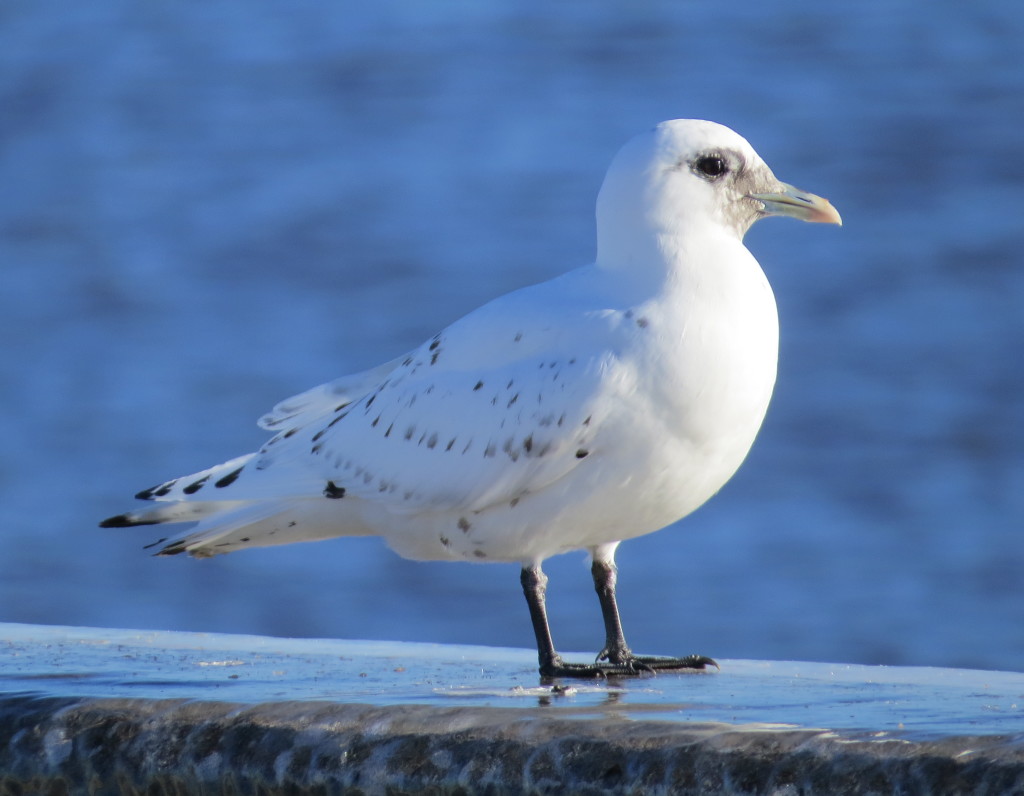
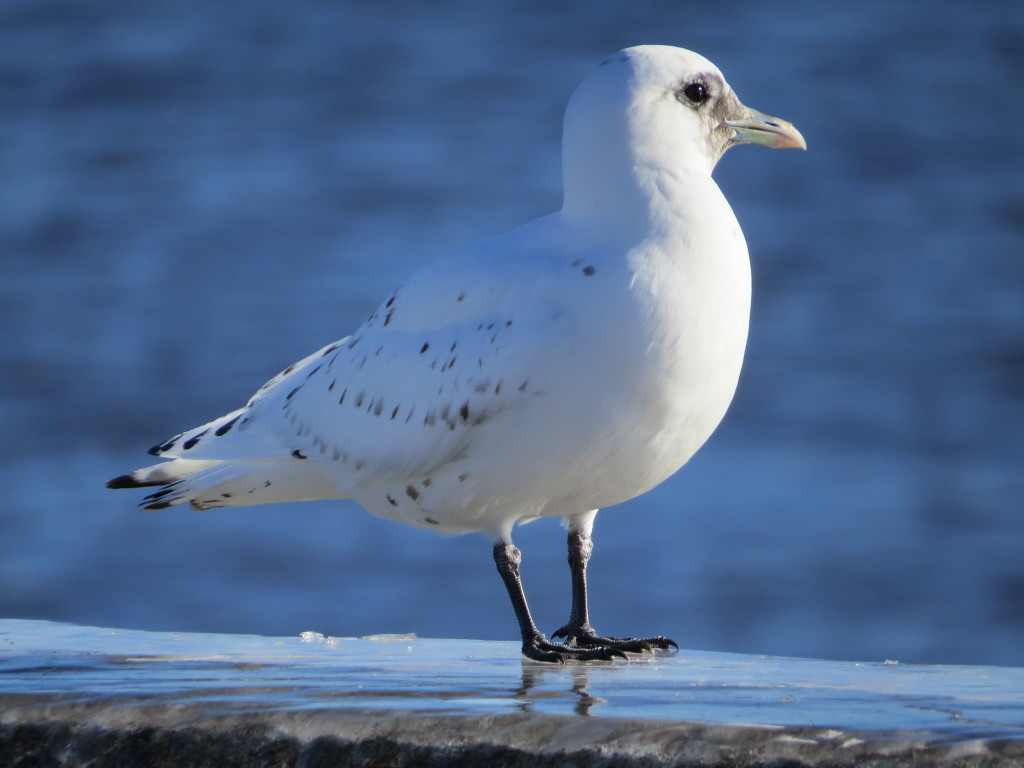 Conditions for viewing the IVGU were awful: wave action from Lake Superior had created a thick glaze of ice over every place an observer might stand. Never have I feared a concussion or wished I owned cleats more. It was downright dangerous. Even the Ivory walked with trepidation.
Conditions for viewing the IVGU were awful: wave action from Lake Superior had created a thick glaze of ice over every place an observer might stand. Never have I feared a concussion or wished I owned cleats more. It was downright dangerous. Even the Ivory walked with trepidation.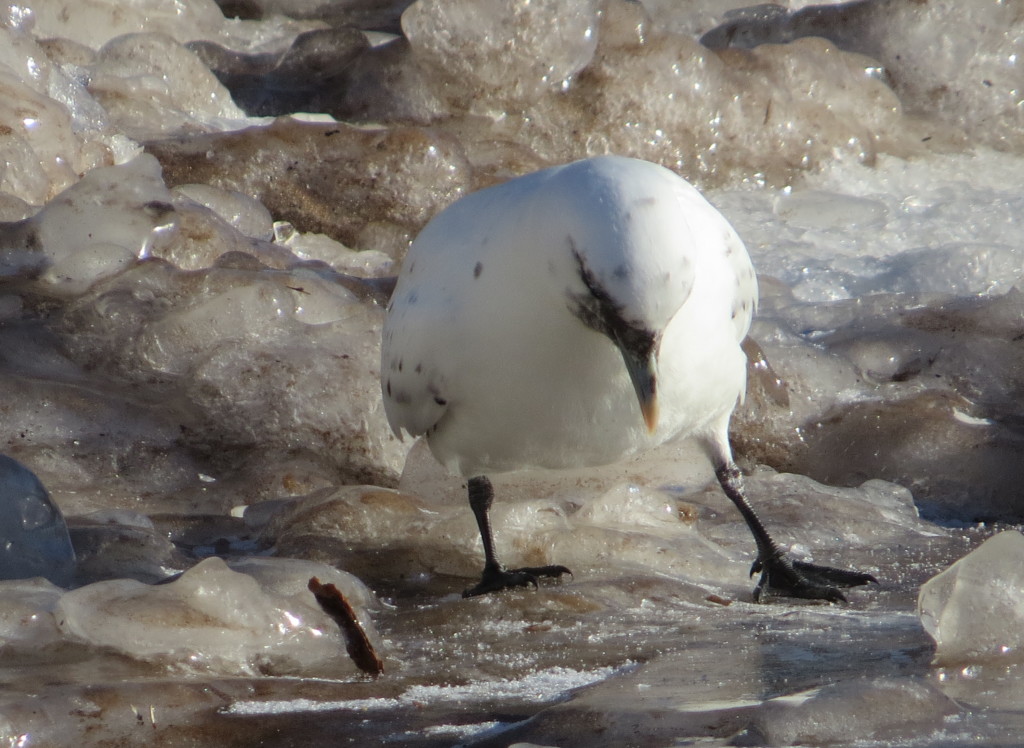 At one point a birder next to me didn’t really know how to proceed off the icy knoll on which we stood. I was getting annoyed with his prolonged hesitation. Then I felt like a complete jerk when the older fellow asked me if I would take his arm and help him down. As I gripped his quivering arm, I realized that this could be me in 30 or so years. It was a reminder of how quickly life moves and why events like this are so important, why we need to experience the phenomenal while we can. Going with friends, like Randy and Joel, make it even better, especially when celebratory beers are had at a place like Bent Paddle Brewhouse.
At one point a birder next to me didn’t really know how to proceed off the icy knoll on which we stood. I was getting annoyed with his prolonged hesitation. Then I felt like a complete jerk when the older fellow asked me if I would take his arm and help him down. As I gripped his quivering arm, I realized that this could be me in 30 or so years. It was a reminder of how quickly life moves and why events like this are so important, why we need to experience the phenomenal while we can. Going with friends, like Randy and Joel, make it even better, especially when celebratory beers are had at a place like Bent Paddle Brewhouse.
Before that celebration, however, there were many other birds to enjoy at Canal Park. This adult Iceland Gull (center of the pic) was a lifer for Joel and the first adult I had seen.
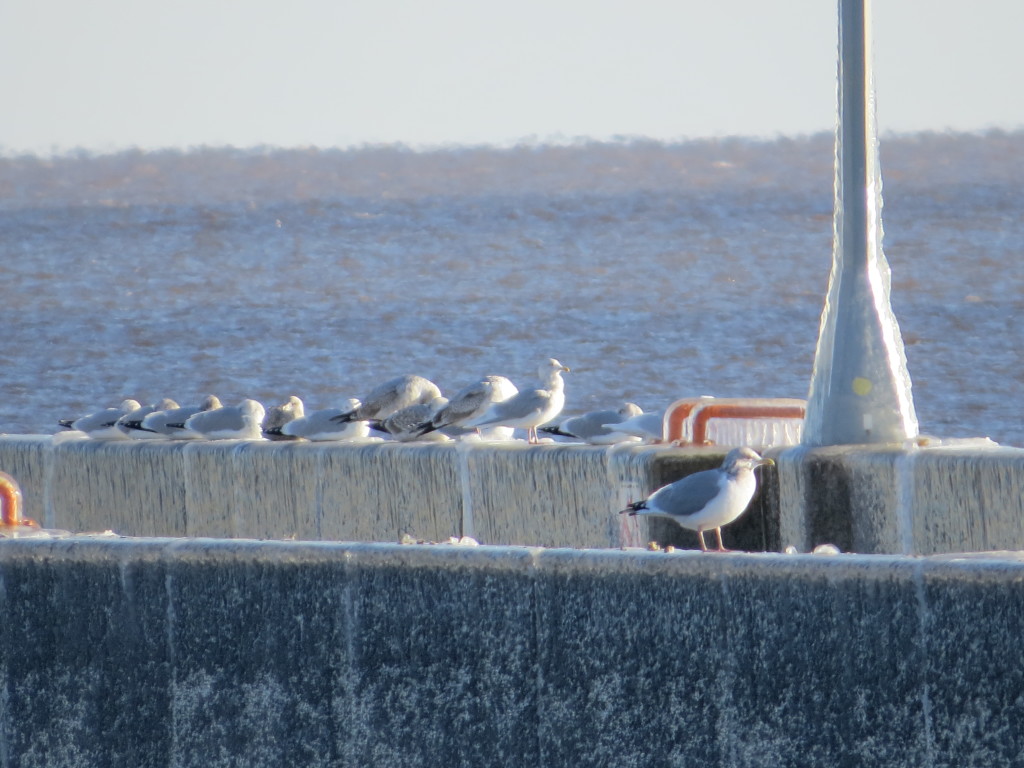 Here was an immature bird that is Thayer’s/Iceland intergrade. The local Larus Jedi call him Stumpy because of his missing tail.
Here was an immature bird that is Thayer’s/Iceland intergrade. The local Larus Jedi call him Stumpy because of his missing tail.
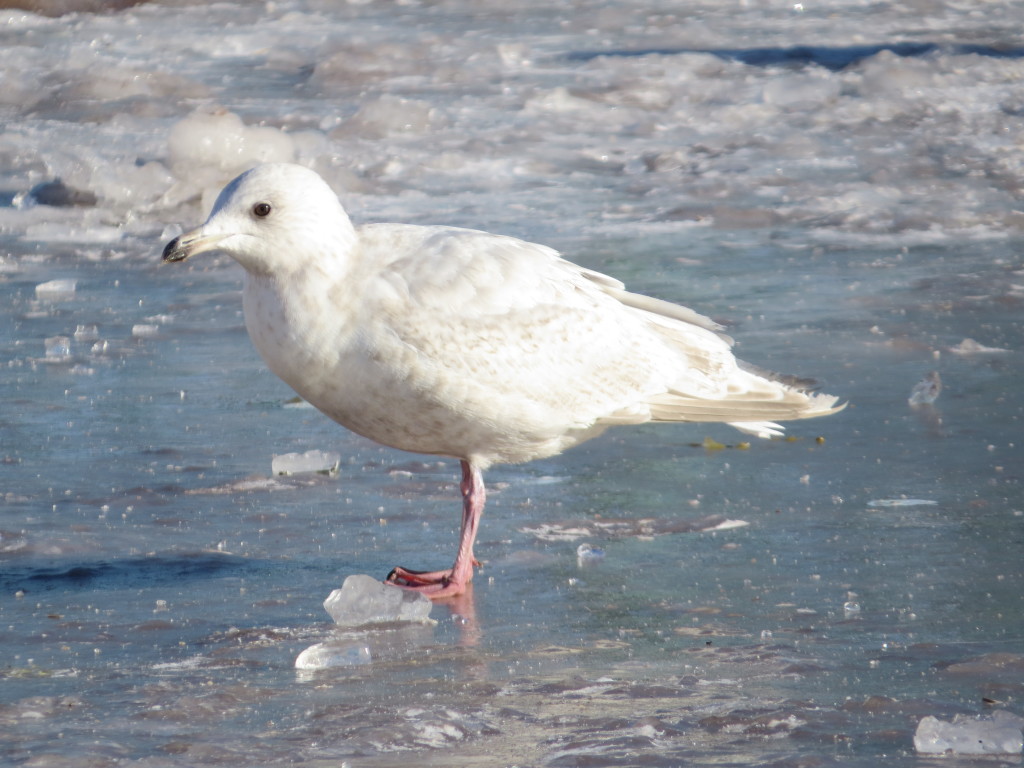 We did see a couple of adult Thayer’s but no Glaucous Gulls this time. Since I got the full Gull smorgasbord a month ago, besides the Ivory I was most excited about all the American Black Ducks. I counted well over a dozen among the 300 Mallards. They really do stand out and the proximity and sunlight made them especially photogenic on this gorgeous day. This is a duck I just don’t see enough, so this was quite enjoyable.
We did see a couple of adult Thayer’s but no Glaucous Gulls this time. Since I got the full Gull smorgasbord a month ago, besides the Ivory I was most excited about all the American Black Ducks. I counted well over a dozen among the 300 Mallards. They really do stand out and the proximity and sunlight made them especially photogenic on this gorgeous day. This is a duck I just don’t see enough, so this was quite enjoyable.
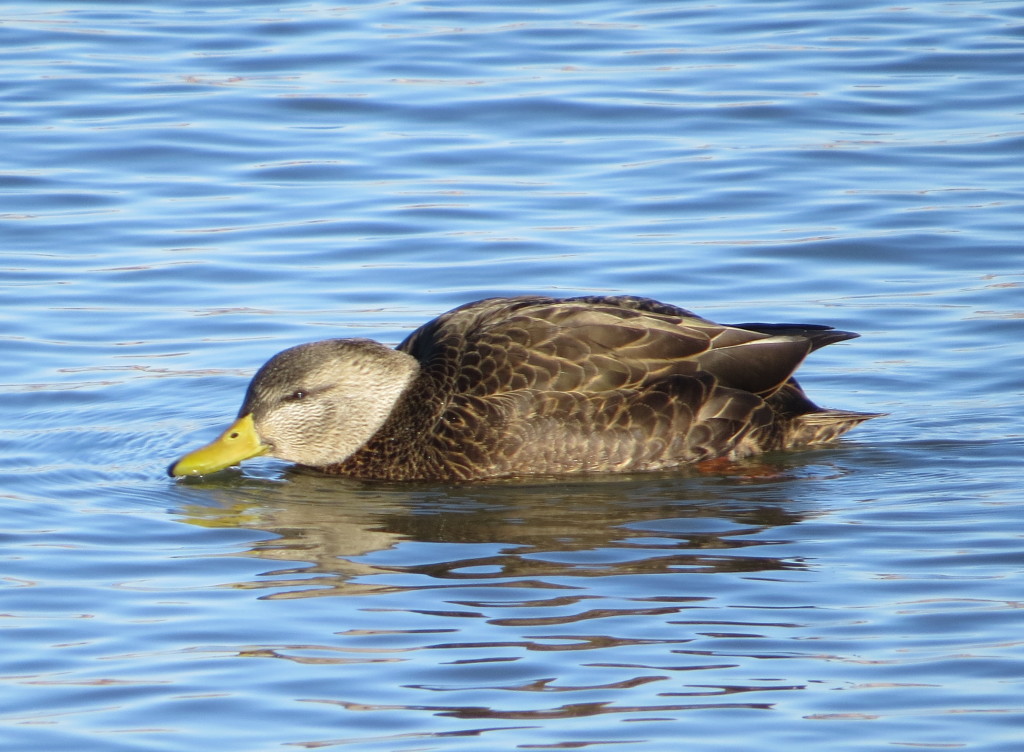
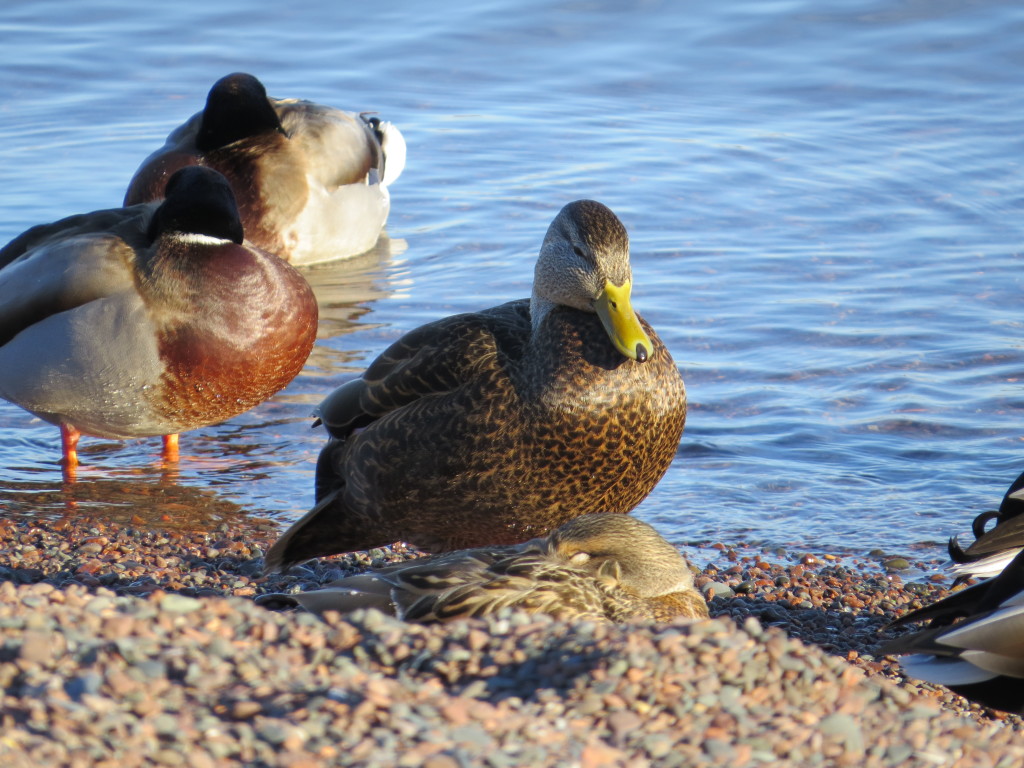
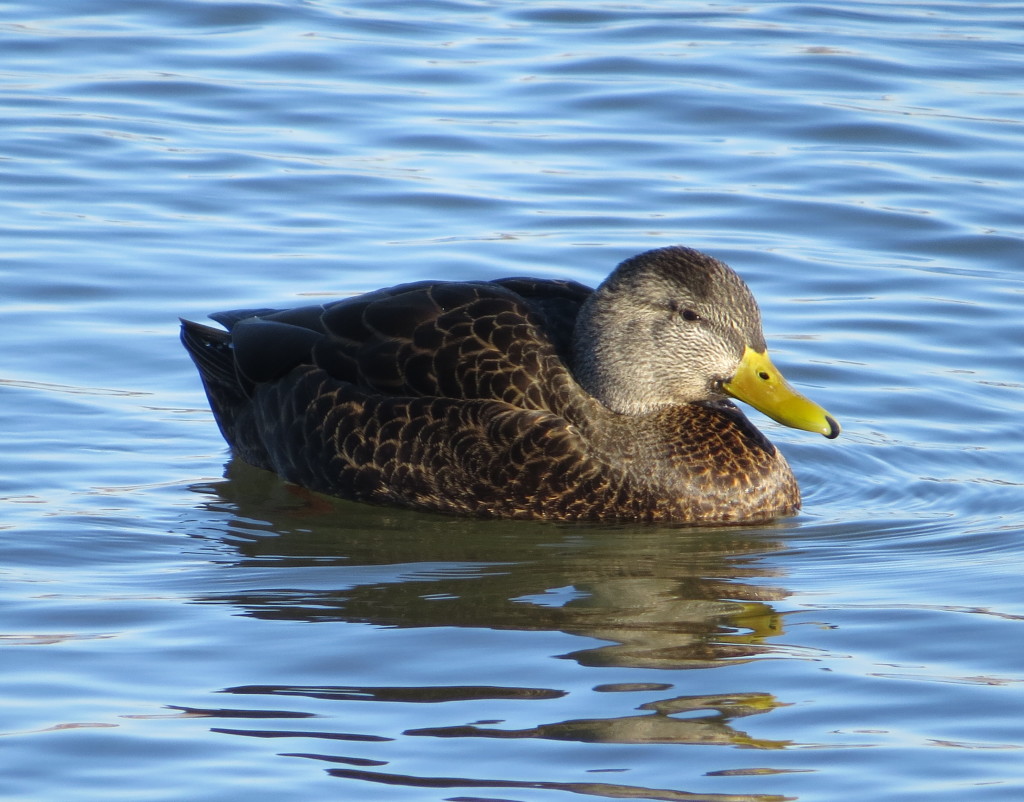 We lingered around Canal Park for a couple hours hoping to find Joel a Great Black-backed Gull lifer, but it just wasn’t in the cards. What was in the cards was the arrival of the longest ship known to the Great Lakes, the 1014-foot long Paul R. Tregurtha:
We lingered around Canal Park for a couple hours hoping to find Joel a Great Black-backed Gull lifer, but it just wasn’t in the cards. What was in the cards was the arrival of the longest ship known to the Great Lakes, the 1014-foot long Paul R. Tregurtha:

I have to tell you how much my family has wanted to see a ship, any ship, pass through the canal, under the lift bridge, and into Duluth Harbor. Evan especially has wanted to see such a thing. How I wish he was along to see this! He may not care about the Gull now, but this would be a heart breaker for him. We have chased ship arrivals before. Once we were at the top of the hill in Duluth, saw a ship coming in, and raced down to Canal Park only to find it had already made it through the canal.
You can see in the above photo that the birders were not impressed and still had their vision trained on the Ivory Gull sitting on the breakwall. Despite seeing more birders than I’ve ever seen before, the birdnerds were quickly outnumbered by hundreds of shipnerds that materialized out of nowhere. It was kind of fun, actually, to trade nerd info with a couple of 60ish ladies. They told us all about their ship; we told them all about our Gull. I didn’t get goosebumps like my shipnerd mates when the Paul R. Tregurtha saluted the lift bridge with its loud horn, but I was impressed nonetheless.

Nerd worlds collide!

 An accidental rare species from the Arctic and the largest ship on the Great Lakes coming in to port made for a most exciting outing. We had one more errand that would put this day completely up and over the top–crossing the Blatnik Bridge to Superior, Wisconsin to pick up a 2016 Gyrfalcon! In less than a year’s time I have seen three Gyrfalcons, which still is not enough because like Jello, there’s always room for Gyr. Photos at this distance were practically impossible, but I’m okay with that.
An accidental rare species from the Arctic and the largest ship on the Great Lakes coming in to port made for a most exciting outing. We had one more errand that would put this day completely up and over the top–crossing the Blatnik Bridge to Superior, Wisconsin to pick up a 2016 Gyrfalcon! In less than a year’s time I have seen three Gyrfalcons, which still is not enough because like Jello, there’s always room for Gyr. Photos at this distance were practically impossible, but I’m okay with that.
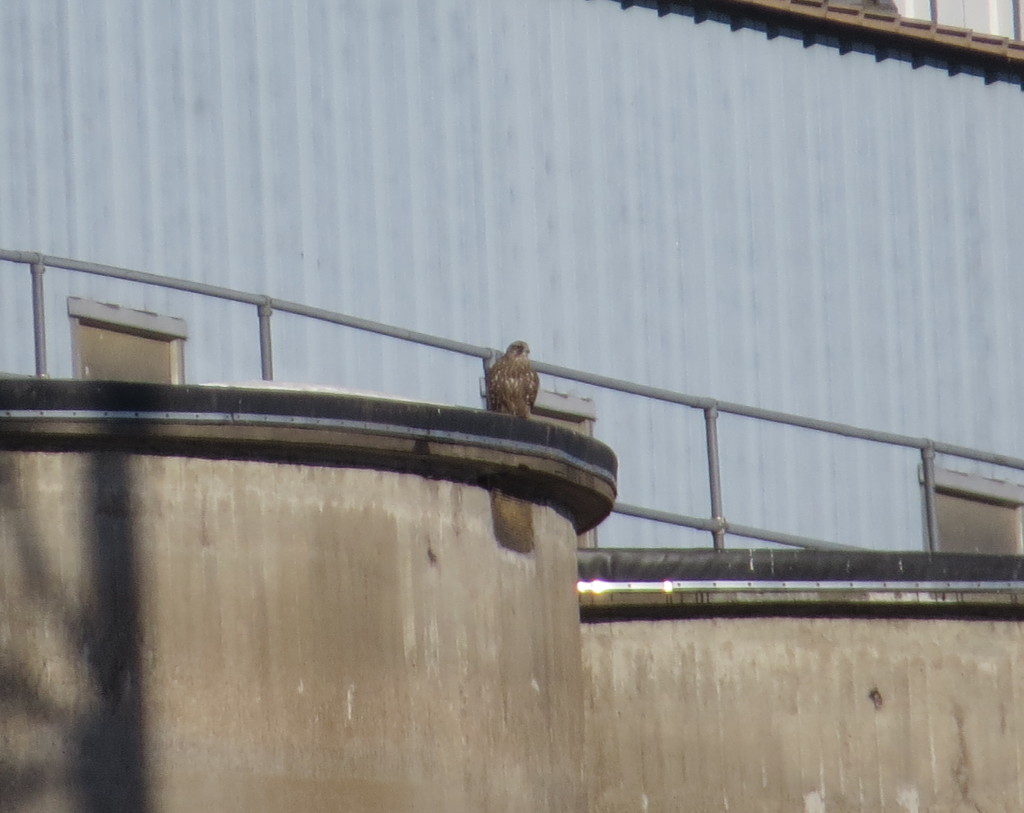
2016 started off with a bang. I shouldn’t be surprised but I always am by the unexpected things that show up. That’s what makes this hobby so horribly addicting. While we wait for the next twist or turn in this new year of birding, a highlight reel of my 2015 will be served up next.
Since the above post was written, two noteworthy developments have happened in the Ivory Gull story. They are each titled below and are well worth the read, especially the second (WOW).
The Perfect Chase
I had never considered just how perfect of a chase this was until my companion Randy Frederickson posted a thank you to the Duluth area birders on the listserv. It is not often that the birding guru posts, but when he does it is humorous and eloquent. Enjoy.
Another wonderful bird found by Duluth area birders, but so much more. Not only a “lifer” for most of us, but how often does a chase end up where you park in a public lot for free, walk 60 yards and get phenomenal looks at your target bird? Throw in a heated visitors
center with clean bathroom facilities and could it get better? Well yes; make sure the report goes out on Friday to give us all a weekend to travel and have the bird frequent the same area long enough that almost no one can miss it. Now place it on the top of a cement wall about eye level and color it in such a way that it stands out amongst its contemporaries. Next, turn up the outside temperature so it runs about 8-10 degrees above the winter average. Heck, let’s do it on the 1st of January so the new year has an avian prelude. Lastly, have the target bird show up among some of the most generous
(of time and talent), and Laridae literate folks in the upper Midwest and there you have it, the perfect chase hosted by wonderful birding brethren. If there is reincarnation after death, I’m coming back as an Ivory Gull and heading to Duluth for unrivaled recognition and camaraderie (but could someone please tell Peder I prefer Walleye)?
Ivory Gull-Double Trouble
Hundreds of birders have seen the Ivory Gull and many more had been making plans to get to Duluth, even coming from far-off places like Toronto and Tennessee. Imagine the utter shock, then, when news came out today that the Ivory Gull was a victim of a predation found dead and ripped to shreds under the Blatnik Bridge on the Wisconsin side! Here is the photographic evidence on Laura Erickson’s blog. I didn’t feel too sorry for those Wisconsin birders who greatly envied us Minnesotans for such an addition to our state lists. Still, an unknown and now dead IVGU on their soil on top of a fresh Packers loss to the Vikings? Ouch. I was, however, really bummed out for Gordon and Tommy as I hoped this incredible lifer would be here waiting for them in three weeks time.
A short time after that initial report, the even more unthinkable happened–someone was declaring that there was an Ivory Gull at Canal Park! This meant one thing and one thing only: TWO Ivory Gulls, both immature birds, had hopped aboard Santa’s sleigh and were in the Duluth area. Simply incredible. The Duluth News Tribune caught wind of the drama after the death of the first bird and had to change their story as events were unfolding. In fact, it is their #1 trending story right now.
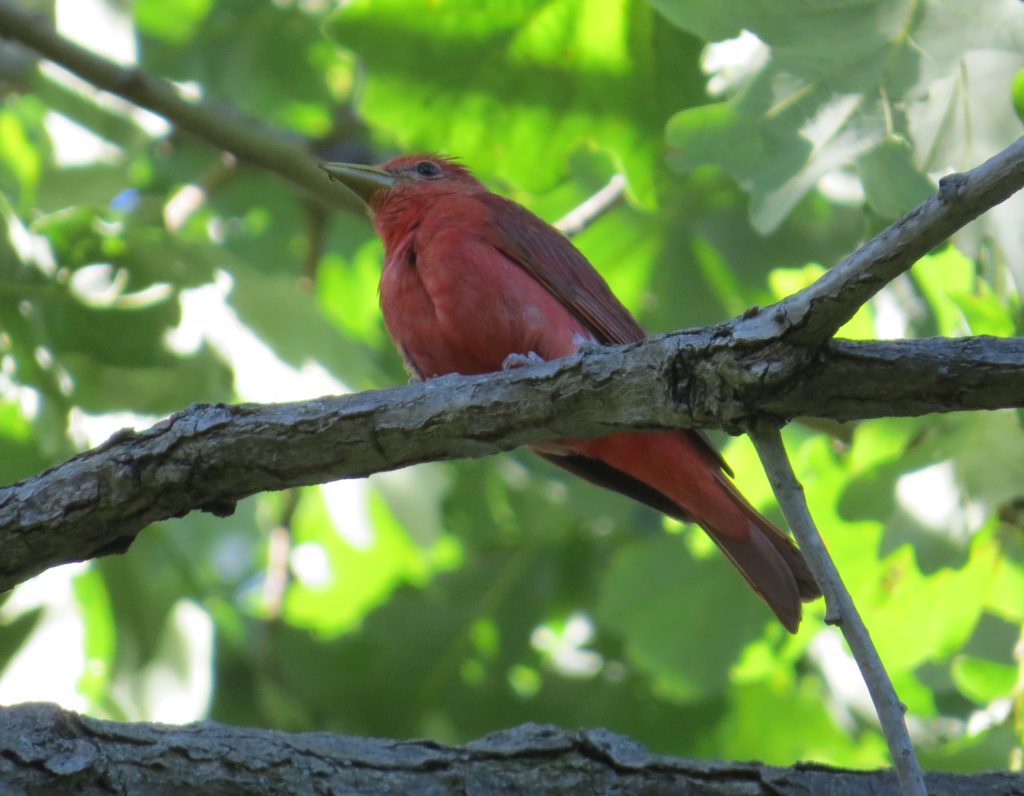 One of the most popular birds in Minnesota this summer has been the Summer Tanager discovered by Wilmer Fernandez at the University of Minnesota’s Landscape Arboretum in Chanhassen. Summer Tanager is rare-regular in the state, but the fact that this bachelor bird was in the Twin Cities and singing endlessly on territory made it all the rage for the better part of a week. Not even the Arboretum’s steep per person entry fee could keep birders away, including yours truly.
One of the most popular birds in Minnesota this summer has been the Summer Tanager discovered by Wilmer Fernandez at the University of Minnesota’s Landscape Arboretum in Chanhassen. Summer Tanager is rare-regular in the state, but the fact that this bachelor bird was in the Twin Cities and singing endlessly on territory made it all the rage for the better part of a week. Not even the Arboretum’s steep per person entry fee could keep birders away, including yours truly.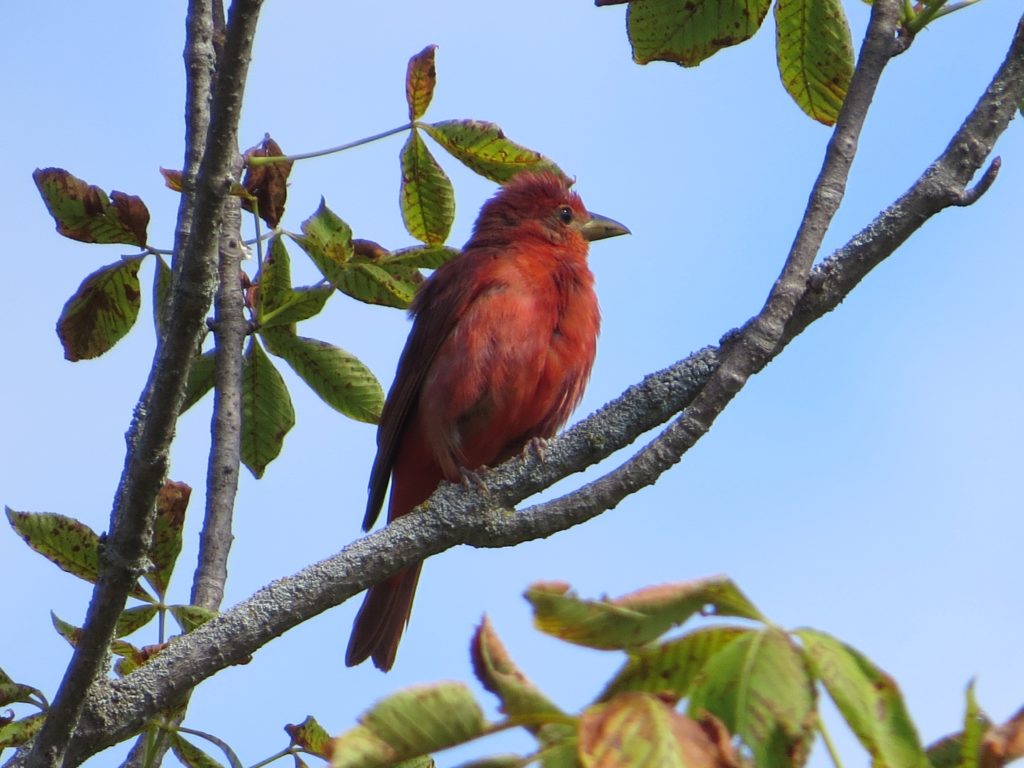 If you’ve been following ABWCH this past spring, you may recall that I already made a Summer Tanager chase to get my lifer. So why did I go after another if I’m not a county lister? Two reasons: this bird was solid red, unlike that tye-died creature I saw earlier this year, and this bird was singing on territory. I wanted the full SUTA experience. That quick migrant sighting didn’t fill the void. Plus this bird was relatively close to home, and I had the time off.
If you’ve been following ABWCH this past spring, you may recall that I already made a Summer Tanager chase to get my lifer. So why did I go after another if I’m not a county lister? Two reasons: this bird was solid red, unlike that tye-died creature I saw earlier this year, and this bird was singing on territory. I wanted the full SUTA experience. That quick migrant sighting didn’t fill the void. Plus this bird was relatively close to home, and I had the time off.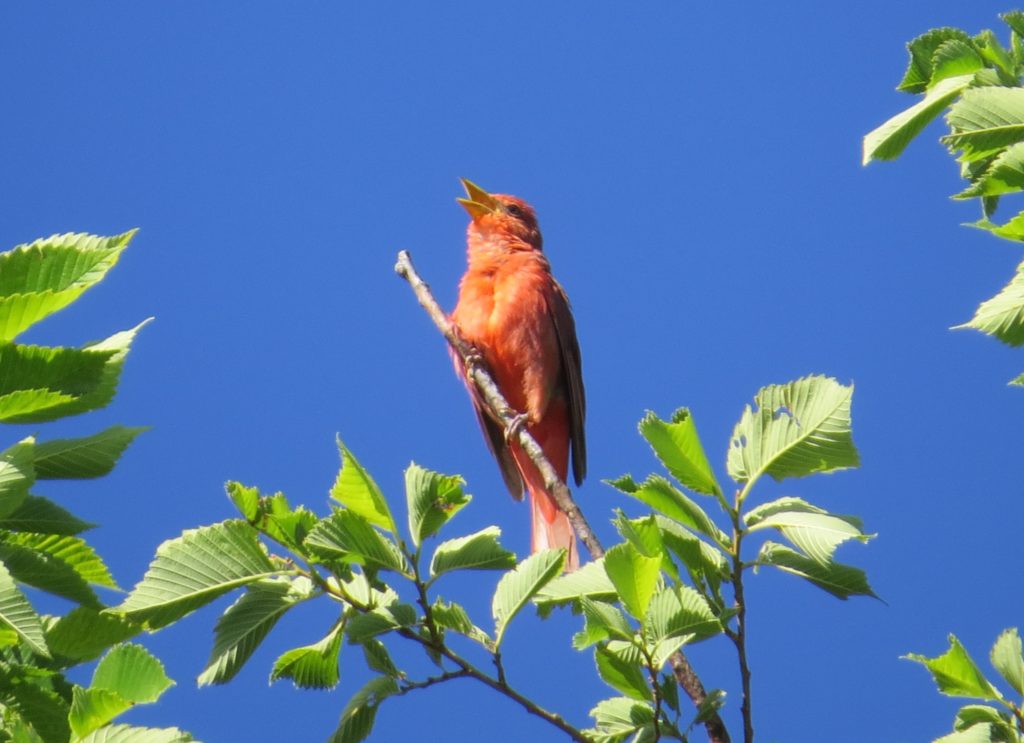 A couple of others who had the time off were teaching colleagues Brad Nelson and Theresa Nelson. The mother-son Nelson duo joined me on this little excursion. Our semi-annual birding get-togethers are always productive and fun–the last time the three of us met up was over a Snowy Owl near one of the towns in our district. Just like we had no problem getting that Owl, seeing this Tanager was a piece of cake. We could hear it singing immediately once we got out of the car at the nut trees section of the Arboretum where it apparently has set up shop for the season. We spent the better part of an hour following it around as it sang endlessly from its various perches, not even stopping its song while it feasted on insects:
A couple of others who had the time off were teaching colleagues Brad Nelson and Theresa Nelson. The mother-son Nelson duo joined me on this little excursion. Our semi-annual birding get-togethers are always productive and fun–the last time the three of us met up was over a Snowy Owl near one of the towns in our district. Just like we had no problem getting that Owl, seeing this Tanager was a piece of cake. We could hear it singing immediately once we got out of the car at the nut trees section of the Arboretum where it apparently has set up shop for the season. We spent the better part of an hour following it around as it sang endlessly from its various perches, not even stopping its song while it feasted on insects: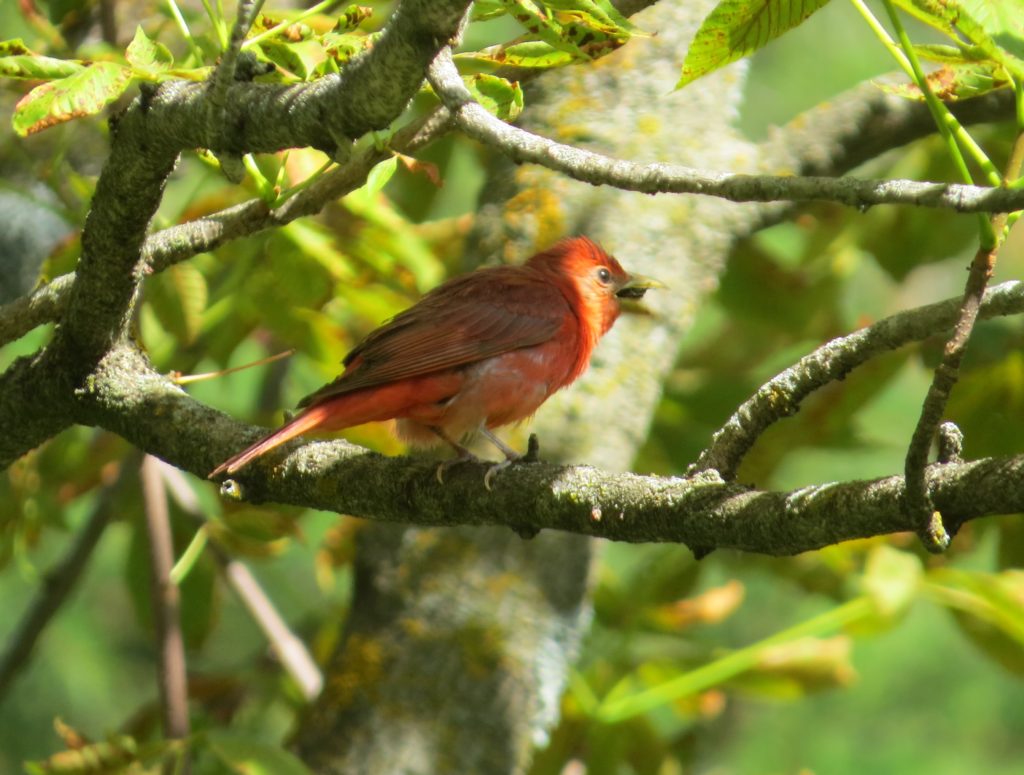
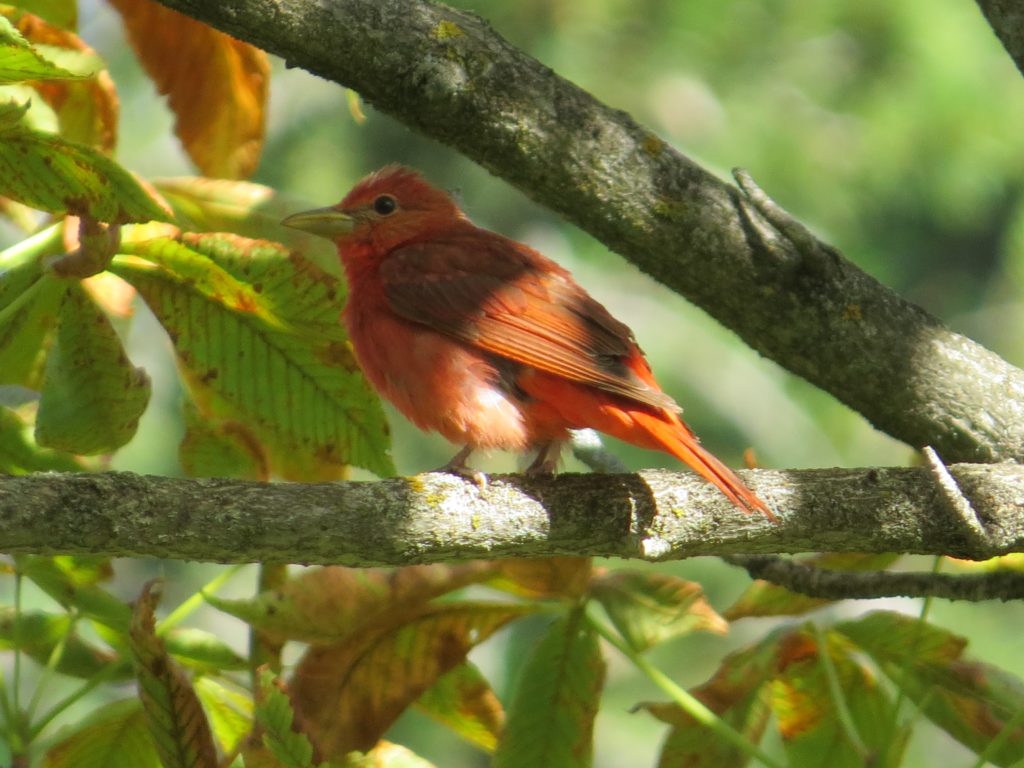 It’s been the year of the Tanager here in MN. To close out this post, here’s a pic of each of the two rare-regular Tanagers and a brand new Scarlet Tanager all seen in state this year. Sorry for turning the Scarlet into a trash bird on this blog. No, I’m not–they are still an exciting bird and this post celebrates all things Tanager.
It’s been the year of the Tanager here in MN. To close out this post, here’s a pic of each of the two rare-regular Tanagers and a brand new Scarlet Tanager all seen in state this year. Sorry for turning the Scarlet into a trash bird on this blog. No, I’m not–they are still an exciting bird and this post celebrates all things Tanager.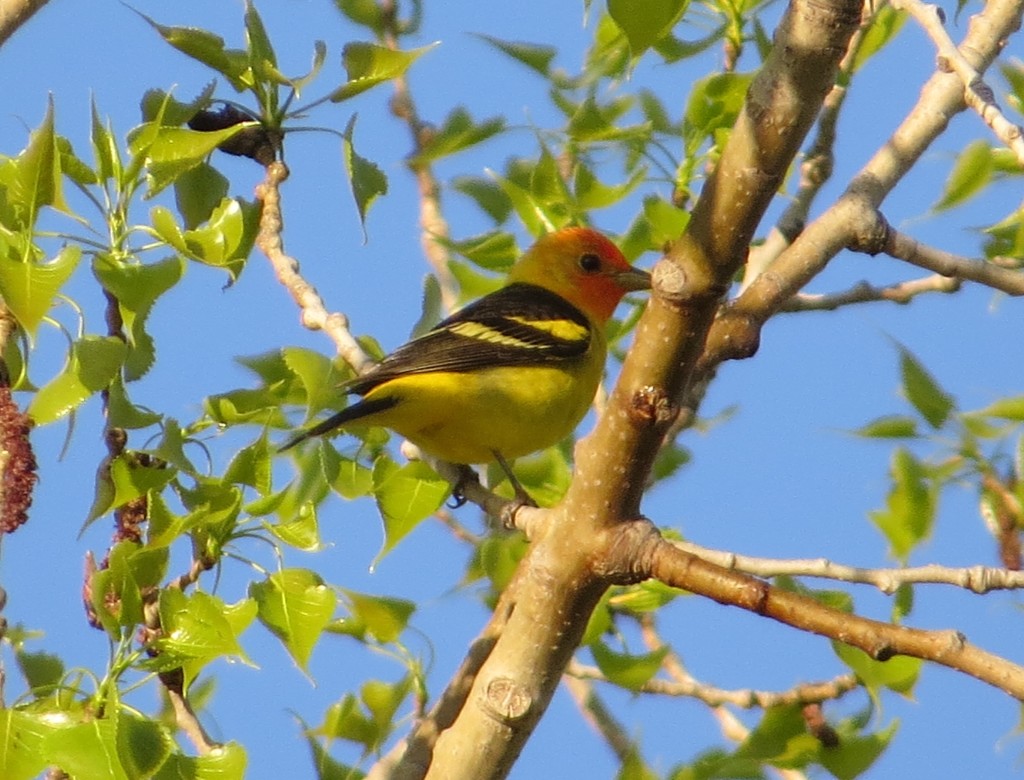
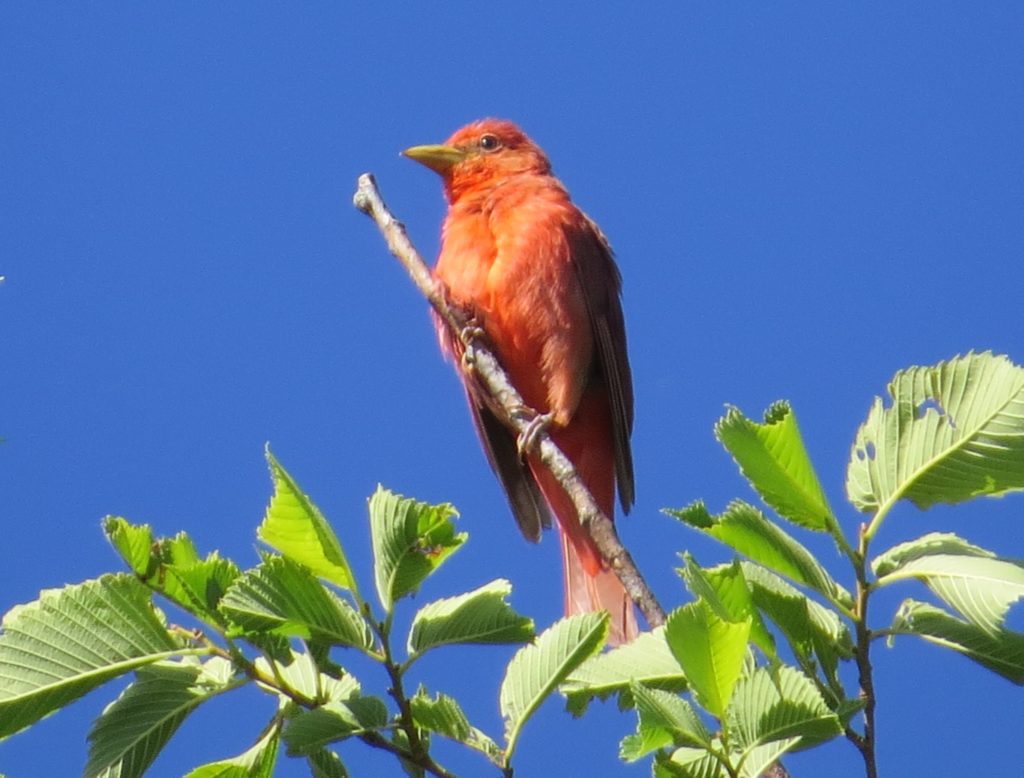
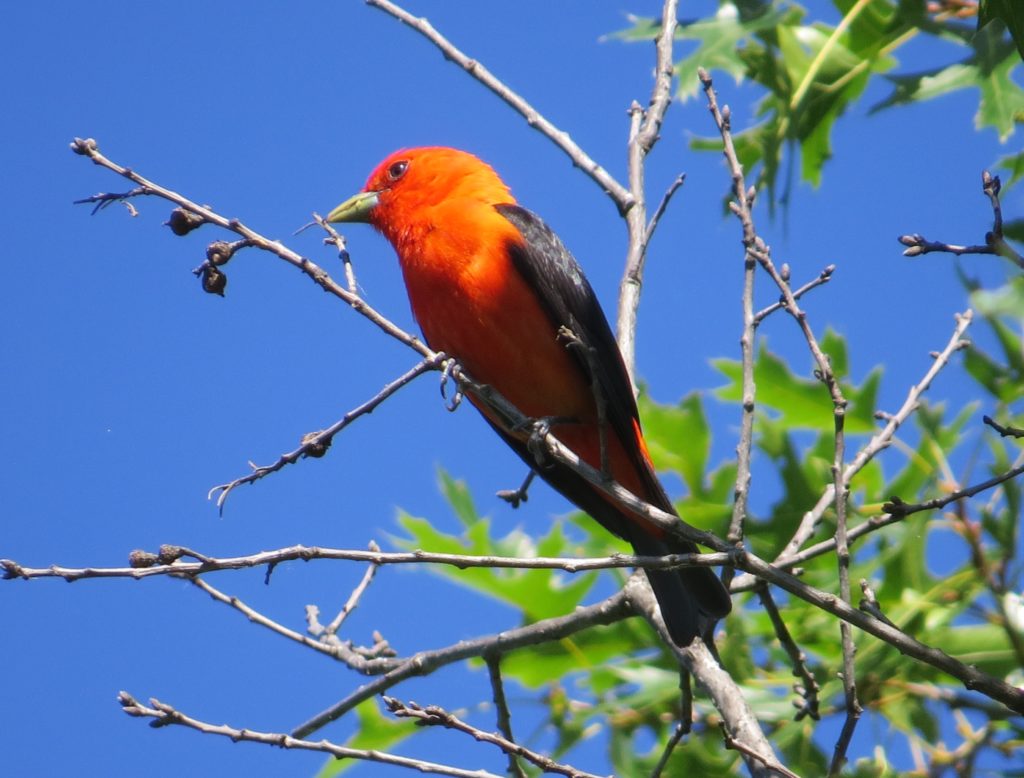

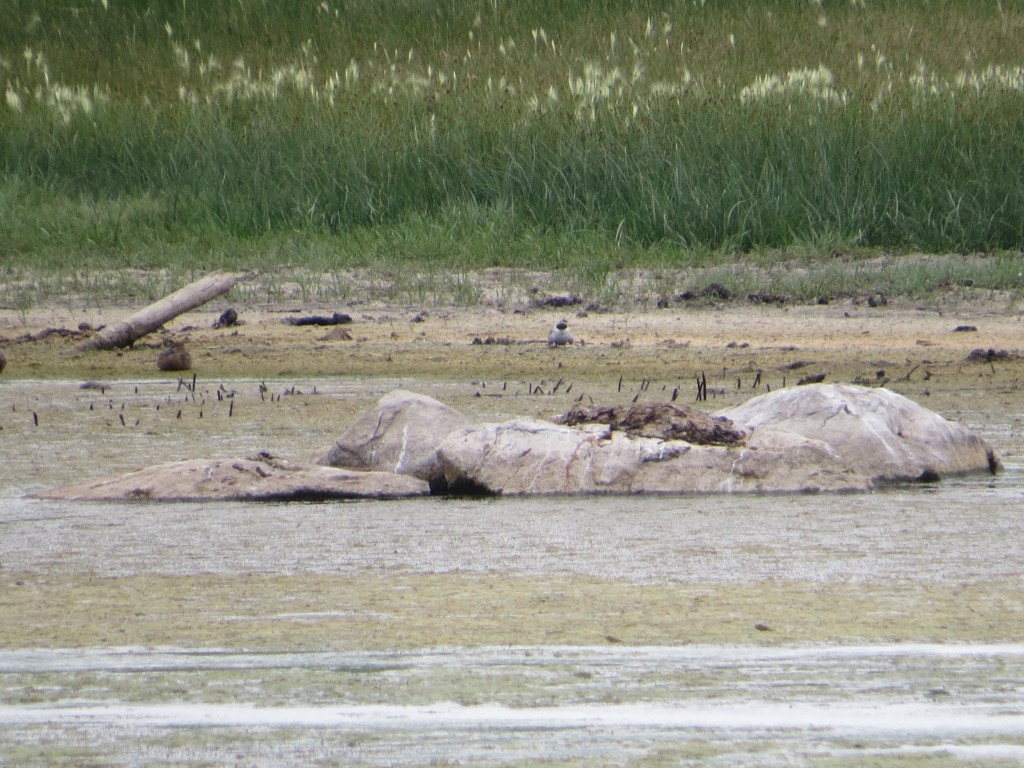 Arctic Tern is casual in Minnesota with most records showing up in Duluth. I never really expected to add this to my life list because A) I’d have to be in Duluth at the right time and B) I’d have to be standing next to an expert birder who could help me differentiate this species from the Common Tern while it flew in the distance.
Arctic Tern is casual in Minnesota with most records showing up in Duluth. I never really expected to add this to my life list because A) I’d have to be in Duluth at the right time and B) I’d have to be standing next to an expert birder who could help me differentiate this species from the Common Tern while it flew in the distance.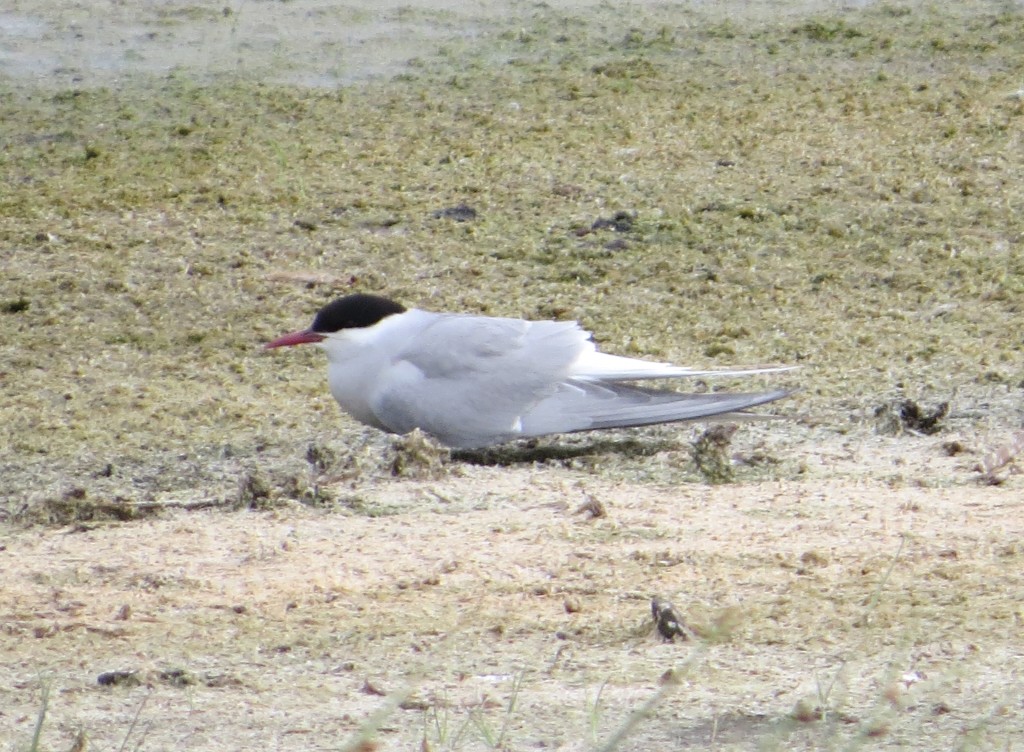 I had thought the Tern was resting on its belly, but I guess its legs are just that short that it only appeared that way. I was hoping to catch the Tern in flight to see the diagnostic dark trailing edge of the primaries. I didn’t get to see it fly, but some other birders did see it fly and captured that field mark in photos. The bird appeared quite lethargic to me, understandable considering the Arctic Tern is famous for its migration from the Antarctic to the Arctic breeding grounds and back each year, a minimum of 24,000 round-trip miles as the crow flies. And we all know Terns don’t fly like Crows. Research with tracking this species has shown that they typically put on 44,000 miles a year. This bird was probably quite wore out and chose the most random of stops to rest.
I had thought the Tern was resting on its belly, but I guess its legs are just that short that it only appeared that way. I was hoping to catch the Tern in flight to see the diagnostic dark trailing edge of the primaries. I didn’t get to see it fly, but some other birders did see it fly and captured that field mark in photos. The bird appeared quite lethargic to me, understandable considering the Arctic Tern is famous for its migration from the Antarctic to the Arctic breeding grounds and back each year, a minimum of 24,000 round-trip miles as the crow flies. And we all know Terns don’t fly like Crows. Research with tracking this species has shown that they typically put on 44,000 miles a year. This bird was probably quite wore out and chose the most random of stops to rest.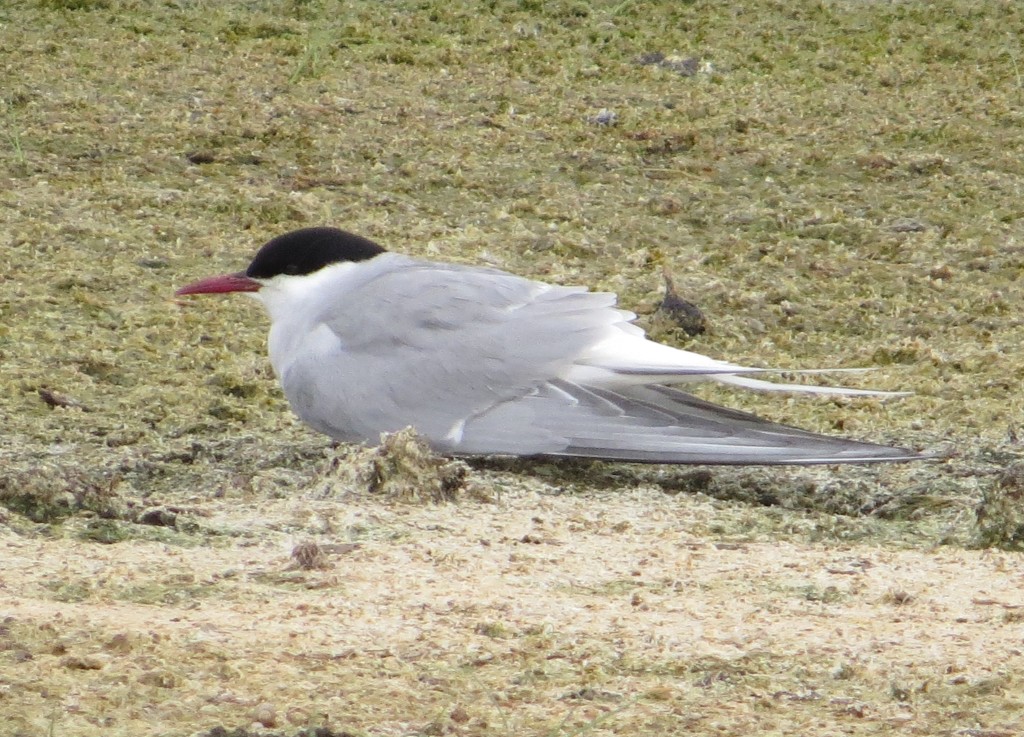 Keeping the Tern company was an American Avocet which is not that rare of bird this far west in Minnesota. Avocets have almost become something of a trash bird on this blog this year. Who would’ve thought?
Keeping the Tern company was an American Avocet which is not that rare of bird this far west in Minnesota. Avocets have almost become something of a trash bird on this blog this year. Who would’ve thought?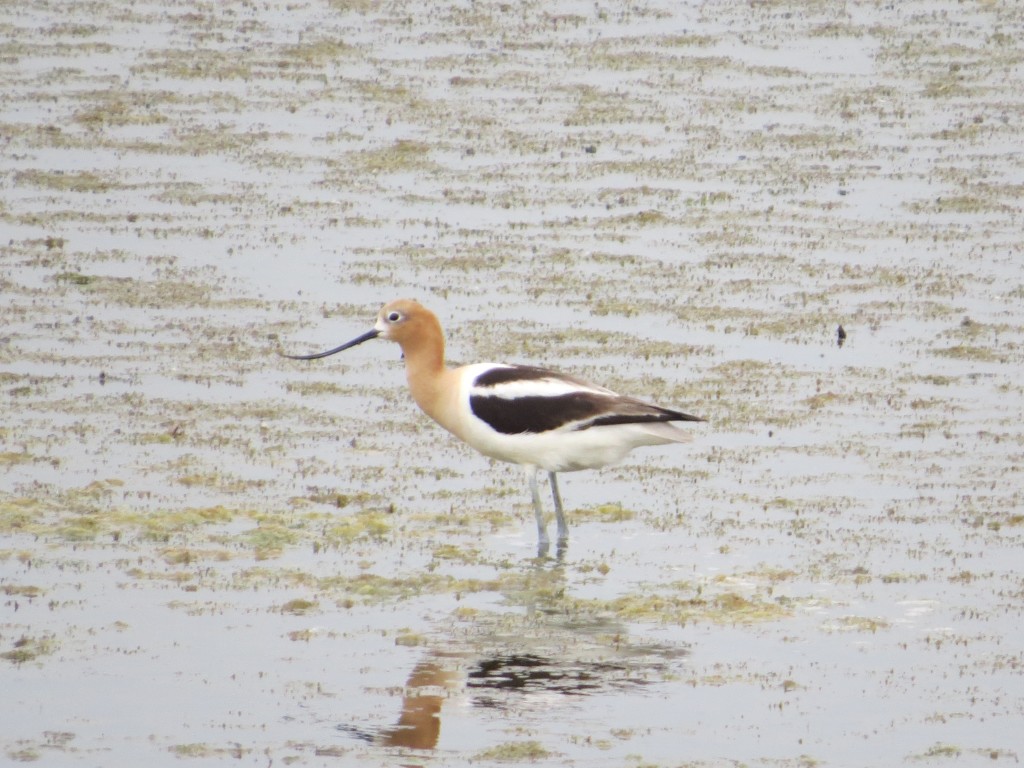 Since the Black-necked Stilts are a good bird for MN and since they had been relocated while I was on my way to the Tern, I decided to check up on them too. The Stilts would not even be a state bird, but I won’t pass up a chance to see some easy ones that are nearby. They are still quite revered here and have not attained the trash nickname of ‘Mud Poodles’ as they have in some other states.
Since the Black-necked Stilts are a good bird for MN and since they had been relocated while I was on my way to the Tern, I decided to check up on them too. The Stilts would not even be a state bird, but I won’t pass up a chance to see some easy ones that are nearby. They are still quite revered here and have not attained the trash nickname of ‘Mud Poodles’ as they have in some other states.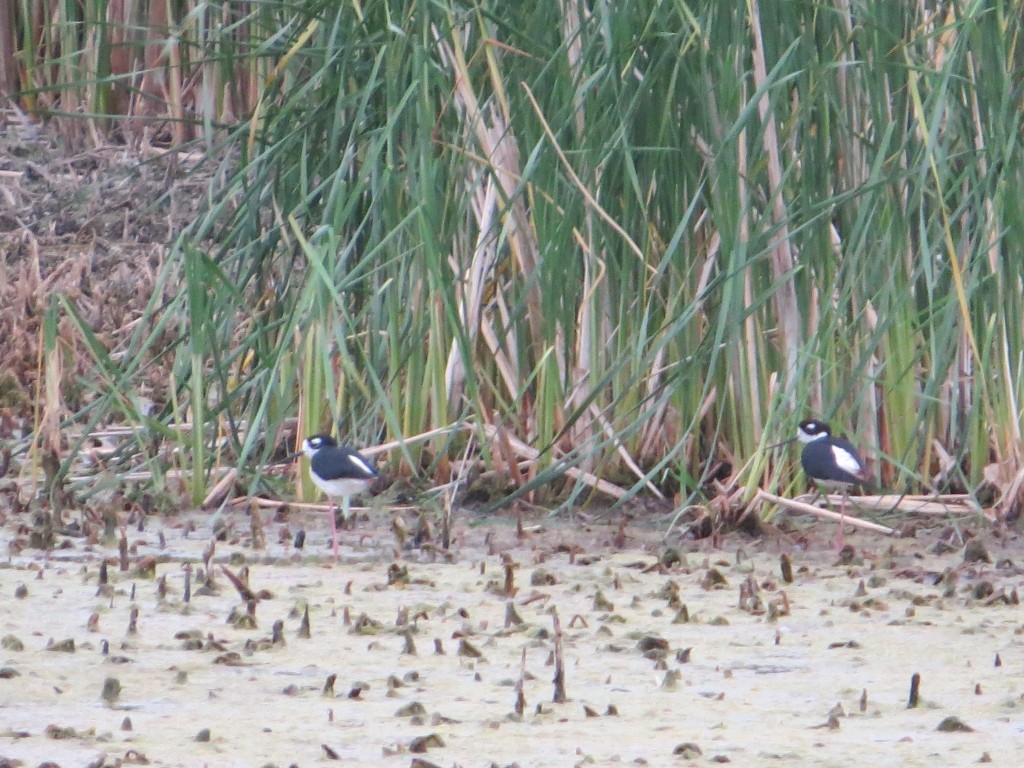 Three great birds, two of which were casual species and one of which was a lifer, made for a great day of birding. Terns out I made the right decision to chase when I did. Unfortunately for Randy and Steve, they were not able to relocate either the Arctic Tern or the Black-necked Stilts the next day.
Three great birds, two of which were casual species and one of which was a lifer, made for a great day of birding. Terns out I made the right decision to chase when I did. Unfortunately for Randy and Steve, they were not able to relocate either the Arctic Tern or the Black-necked Stilts the next day.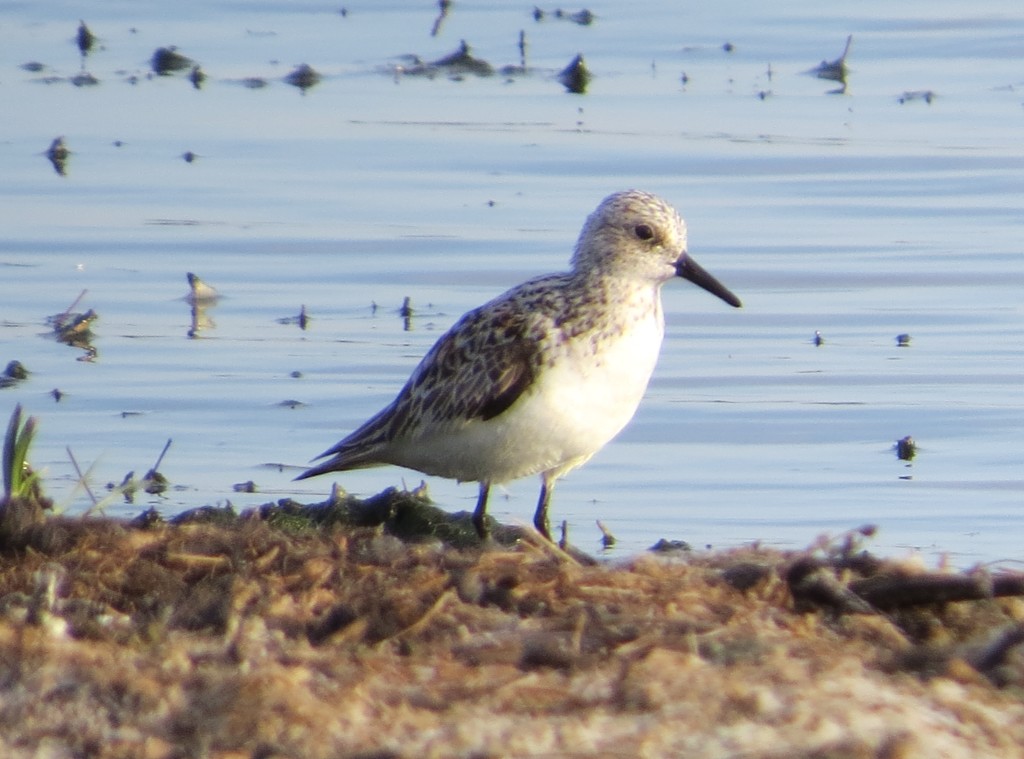 On the way out of Salt Lake I ran into Herb Dingman just heading in. He, of course, was disappointed to hear my report but decided to look anyway. I told him to call me if it showed before I got too far away. That call didn’t come…until I was 15 minutes from home. Herb had seen it. I couldn’t turn around; I had obligations at home before my parents came to visit.
On the way out of Salt Lake I ran into Herb Dingman just heading in. He, of course, was disappointed to hear my report but decided to look anyway. I told him to call me if it showed before I got too far away. That call didn’t come…until I was 15 minutes from home. Herb had seen it. I couldn’t turn around; I had obligations at home before my parents came to visit.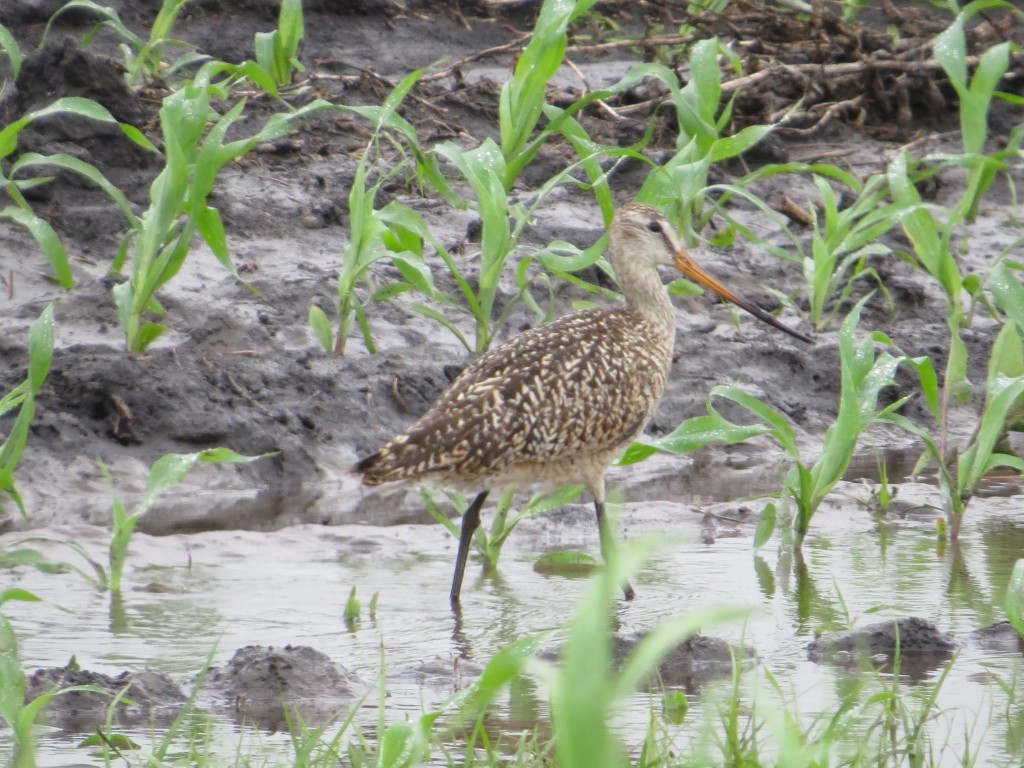
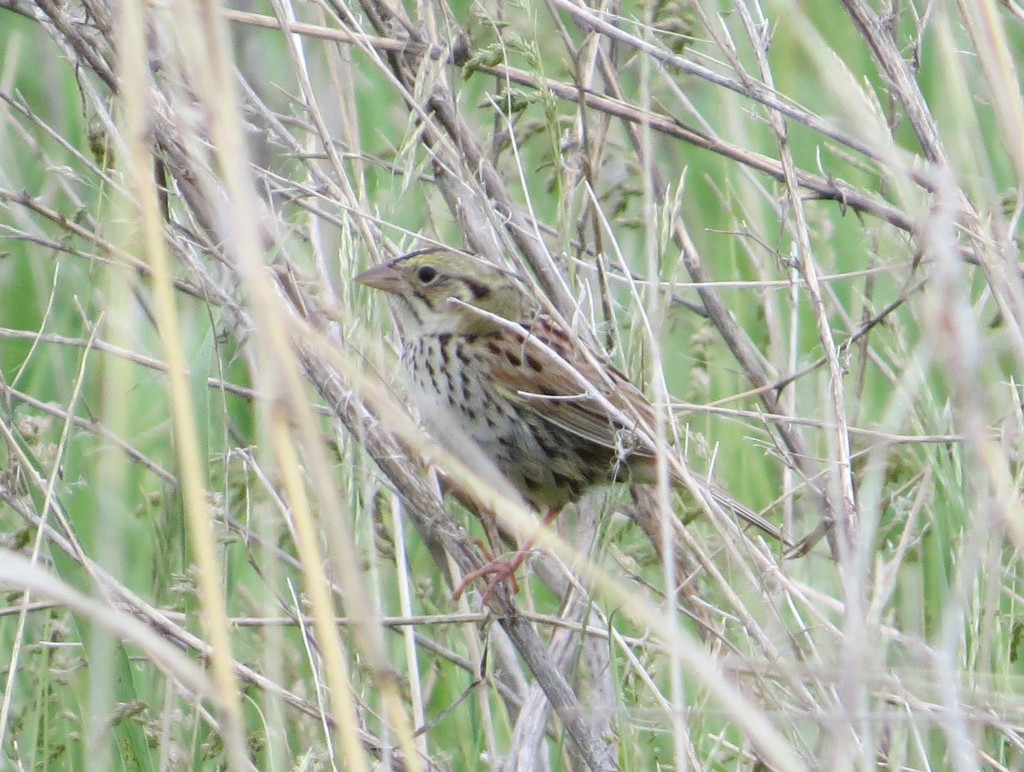
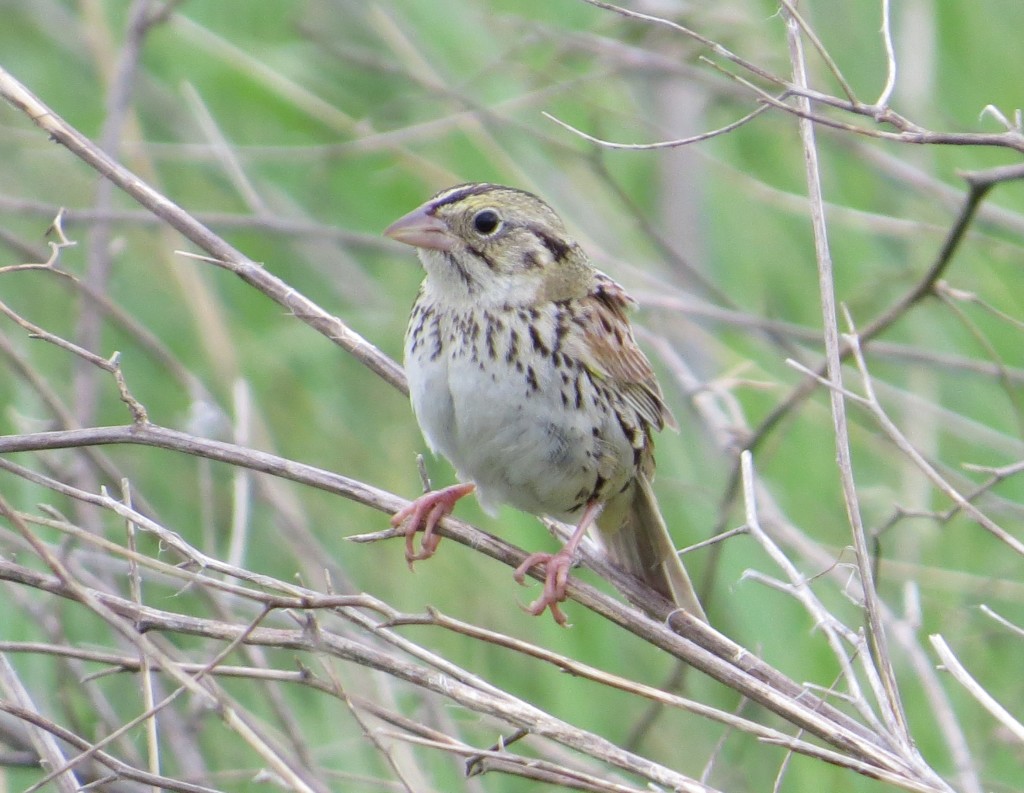
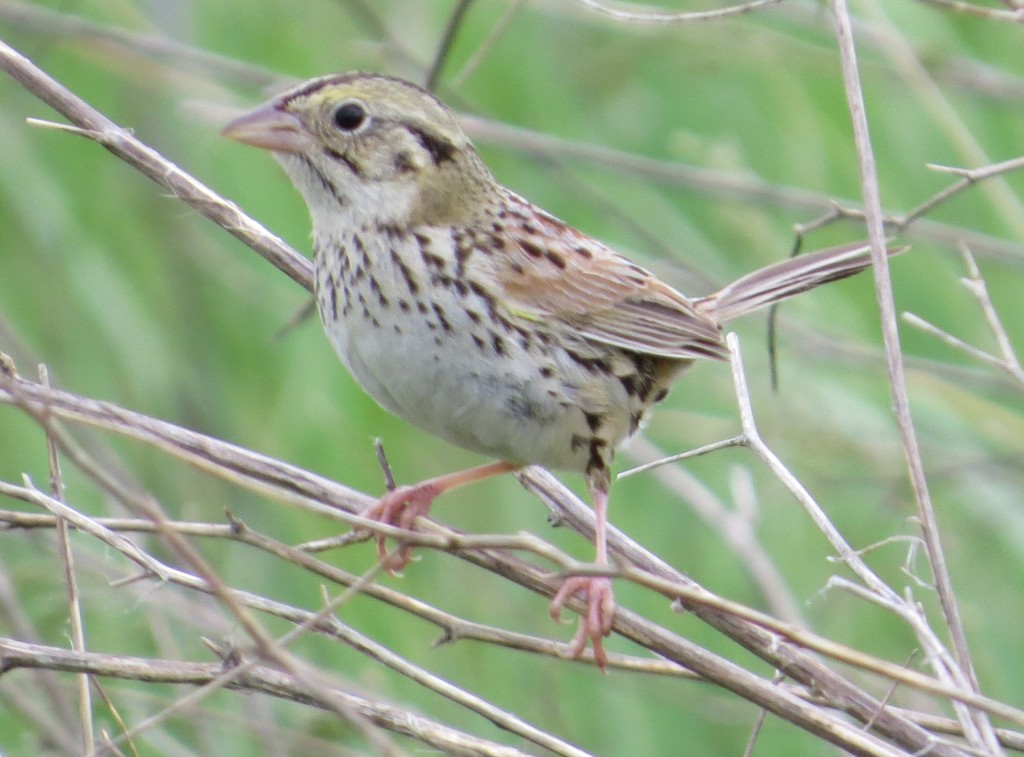 This felt great and made up for the double dip. Dad and I continued to check Salt Lake for the Tern who did not keep any kind of regular schedule. We were not successful, but we did enjoy some of the native grassland birds, like Bobolink and Dad’s favorite, Western Meadowlark.
This felt great and made up for the double dip. Dad and I continued to check Salt Lake for the Tern who did not keep any kind of regular schedule. We were not successful, but we did enjoy some of the native grassland birds, like Bobolink and Dad’s favorite, Western Meadowlark.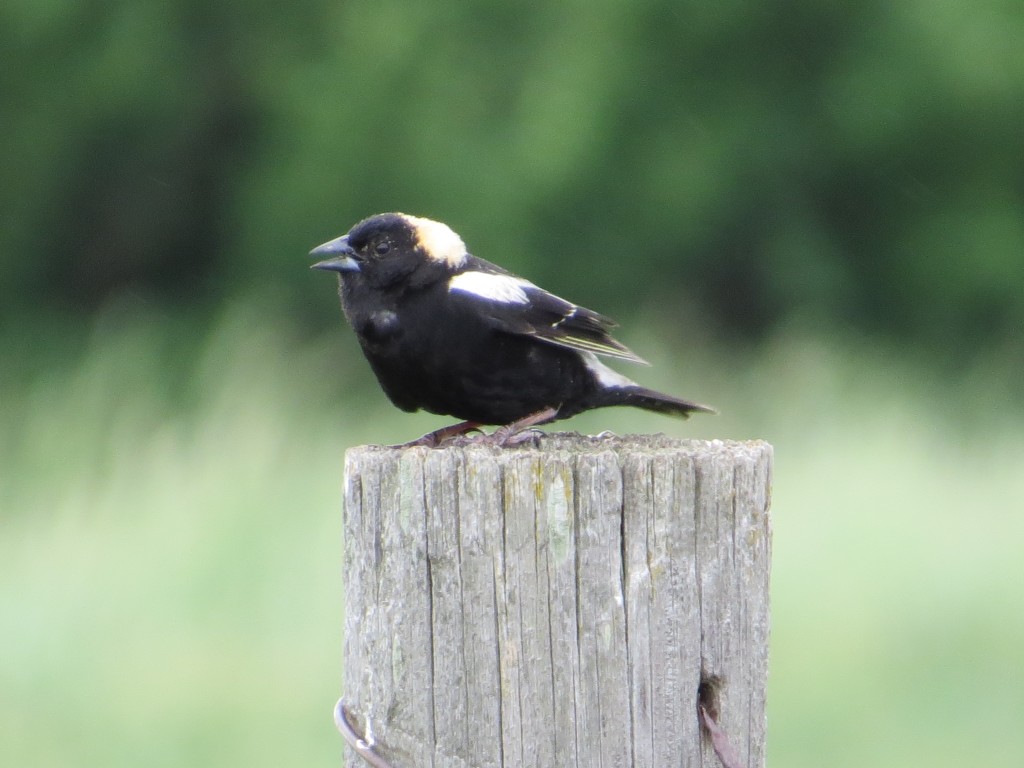
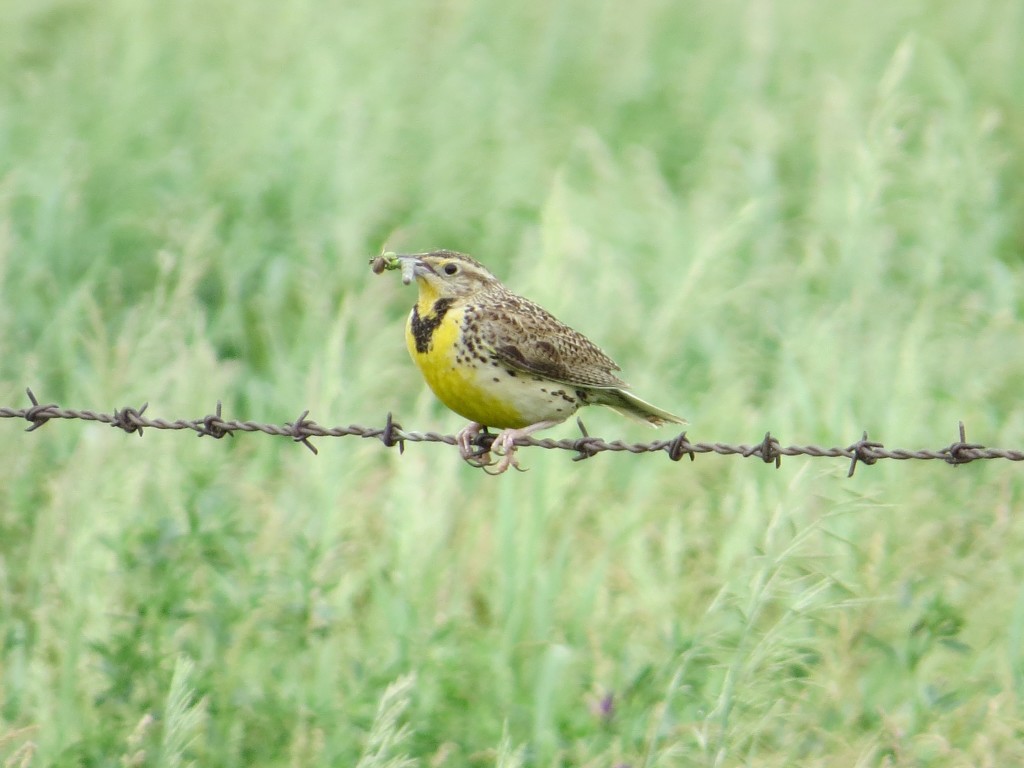 With no luck on the Tern, we decided to try one last time for the Bunting. Nothing. Grasshopper Sparrows are nice, just not LABU nice.
With no luck on the Tern, we decided to try one last time for the Bunting. Nothing. Grasshopper Sparrows are nice, just not LABU nice.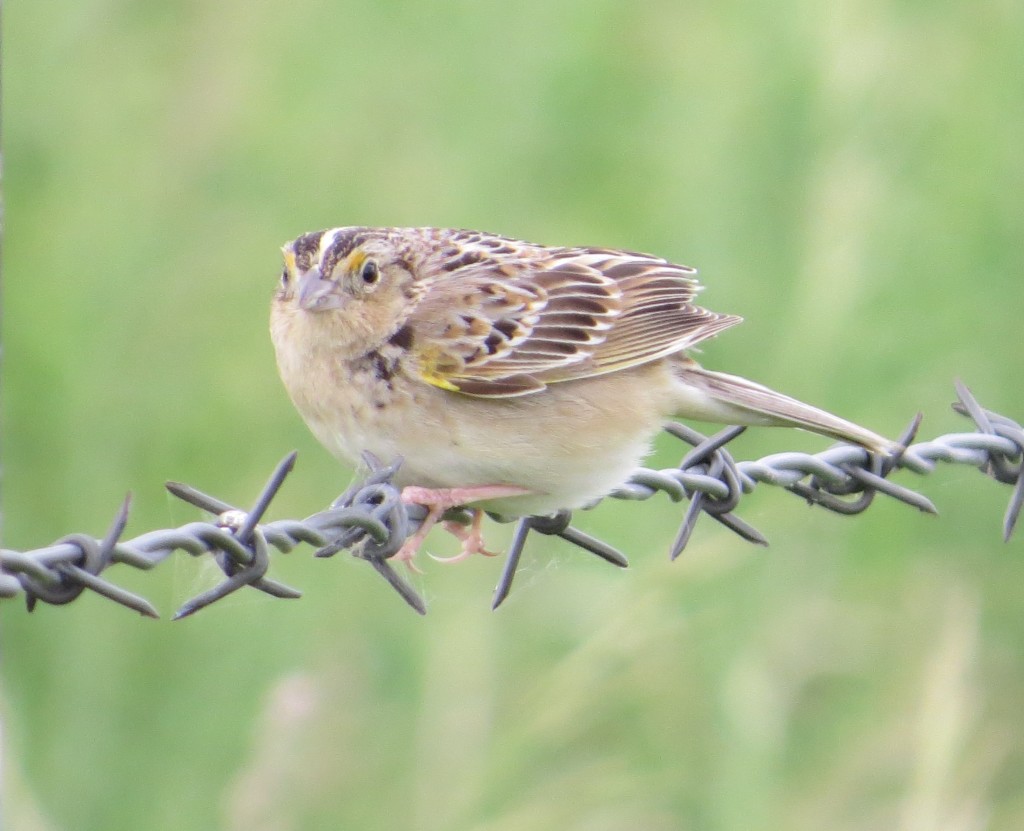
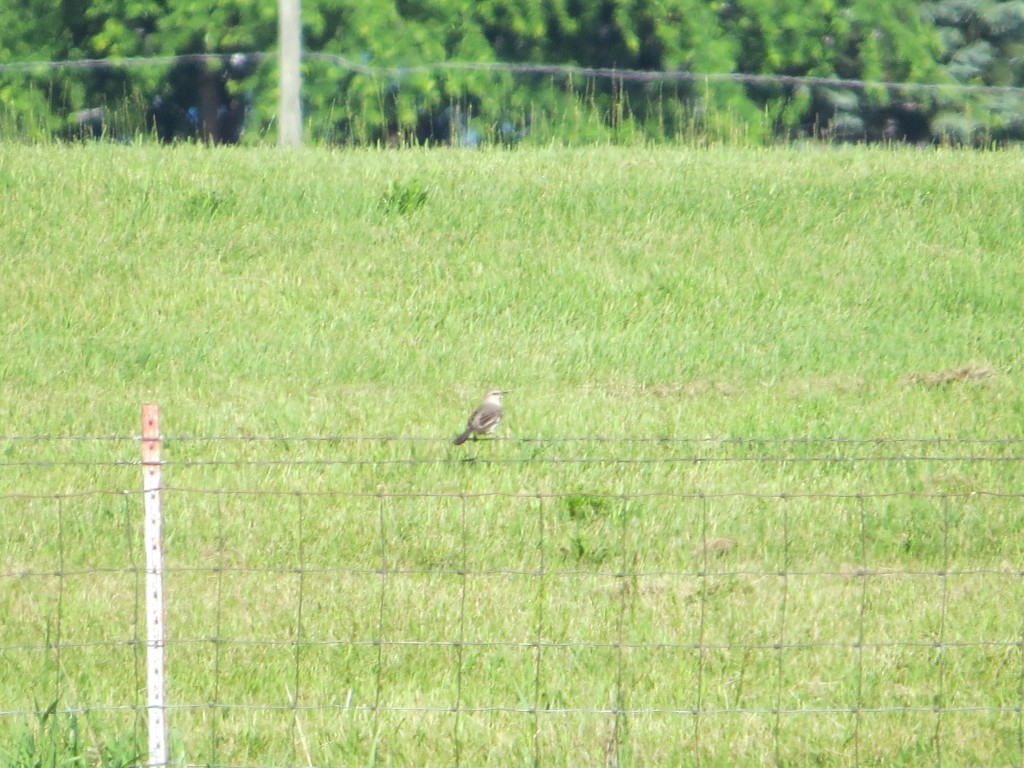 After church, the dreaded news came: the Tern had been re-sighted at Salt Lake. I hemmed and hawed over going back a third time. This bird had burned me bad. Finally I gave in. It is only 1.5 hours away. Dad and I hopped in the car for another chase. This time I was smart about it, though. ABWCH reader, Tod Eggenberger, had been there all day, left to go home, and turned around once he saw the news. He was 30 miles away. I asked Tod to keep me in the loop and let me know if this unpredictable, elusive bird were to give people the slip again. Unfortunately for Tod, he missed it by 5 minutes before the bird vanished again forever. Fortunately for me, I got the news before I reached the halfway point to Salt Lake. I decided I would go that far in case there was positive news. There wasn’t. So I turned around at the predetermined spot and cut my losses. Take that, you stupid Tern!
After church, the dreaded news came: the Tern had been re-sighted at Salt Lake. I hemmed and hawed over going back a third time. This bird had burned me bad. Finally I gave in. It is only 1.5 hours away. Dad and I hopped in the car for another chase. This time I was smart about it, though. ABWCH reader, Tod Eggenberger, had been there all day, left to go home, and turned around once he saw the news. He was 30 miles away. I asked Tod to keep me in the loop and let me know if this unpredictable, elusive bird were to give people the slip again. Unfortunately for Tod, he missed it by 5 minutes before the bird vanished again forever. Fortunately for me, I got the news before I reached the halfway point to Salt Lake. I decided I would go that far in case there was positive news. There wasn’t. So I turned around at the predetermined spot and cut my losses. Take that, you stupid Tern!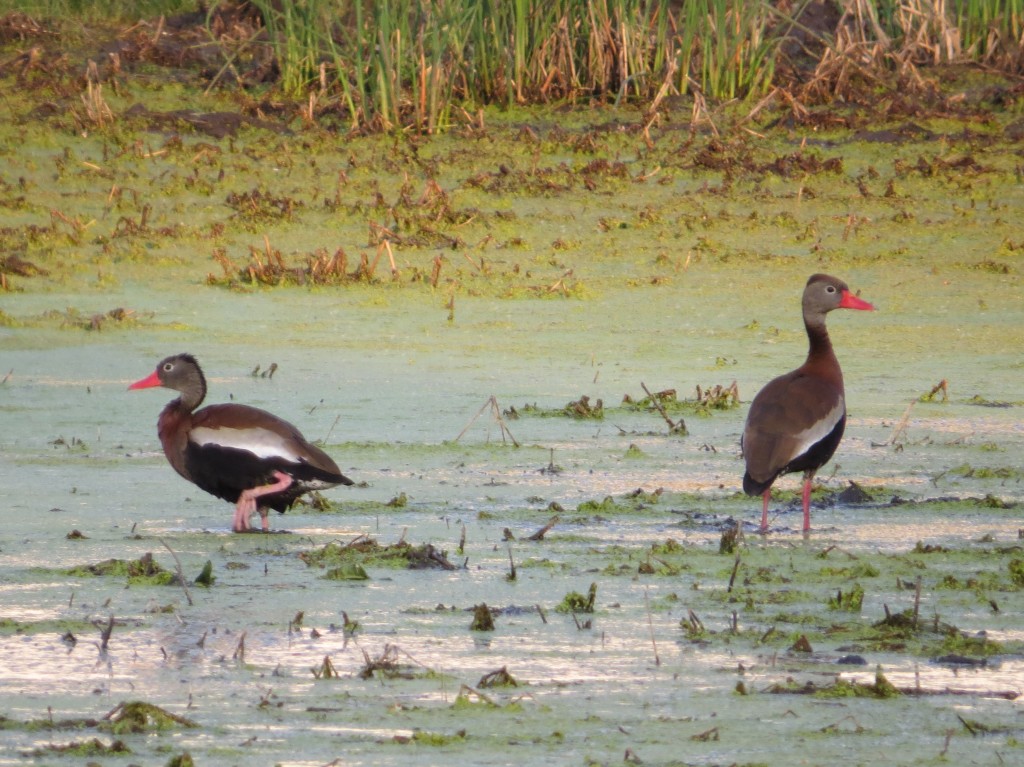 This was a lifer for me and a state bird for Randy. Technically Evan and I have seen this duck before–we once spotted a pair in a monkey exhibit at the Phoenix Zoo. However, the docent told us they had their wings clipped and of course did not “count”. That sighting was good enough for Evan but not me. I did try for some wild ones last year in Rio Rico, AZ but came up empty. Black-bellied Whistling-Ducks are mostly found in Texas and limited parts of Arizona and Florida but occasionally stray into the Midwest. It was a nice treat to see them right here at home.
This was a lifer for me and a state bird for Randy. Technically Evan and I have seen this duck before–we once spotted a pair in a monkey exhibit at the Phoenix Zoo. However, the docent told us they had their wings clipped and of course did not “count”. That sighting was good enough for Evan but not me. I did try for some wild ones last year in Rio Rico, AZ but came up empty. Black-bellied Whistling-Ducks are mostly found in Texas and limited parts of Arizona and Florida but occasionally stray into the Midwest. It was a nice treat to see them right here at home.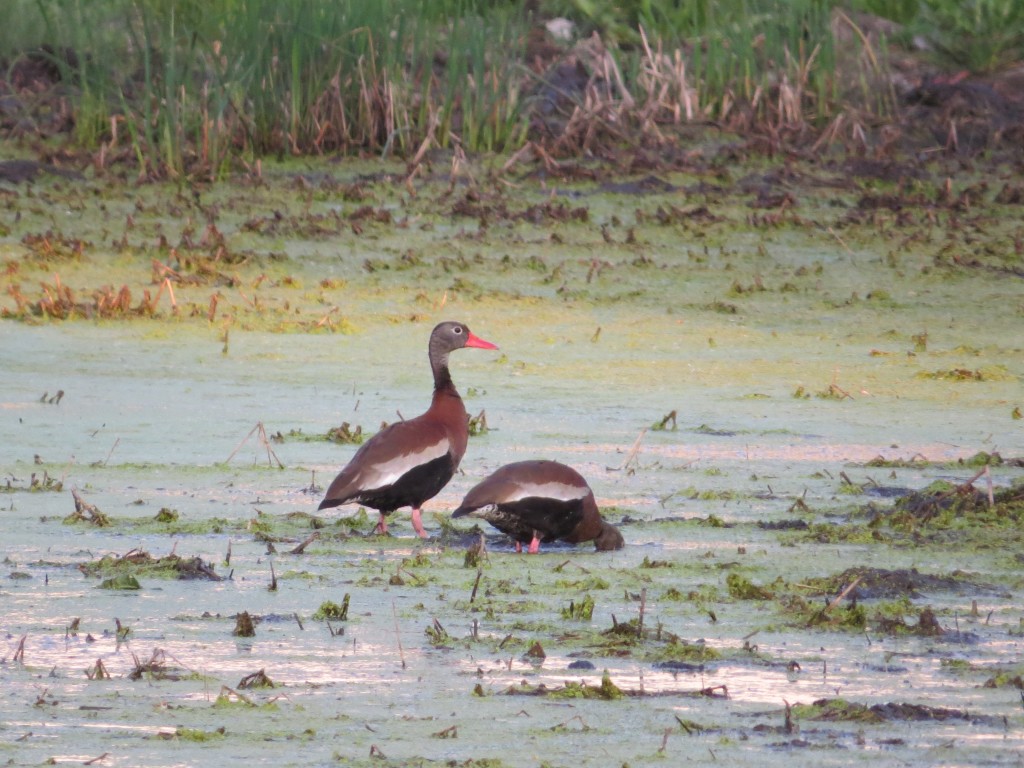
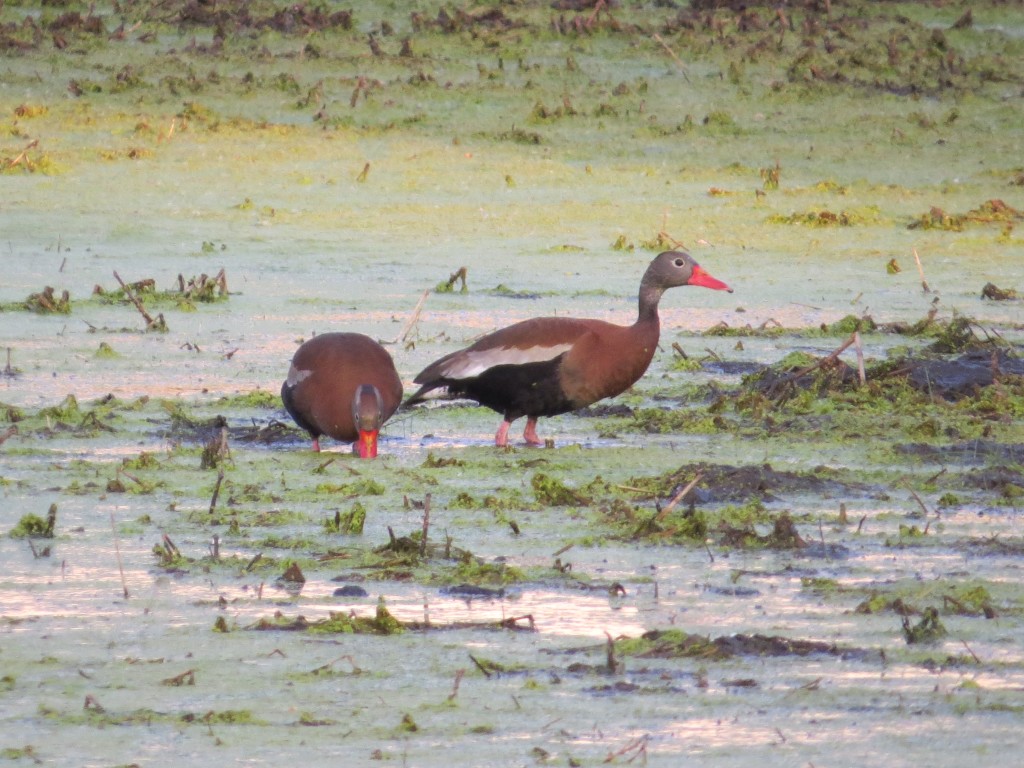
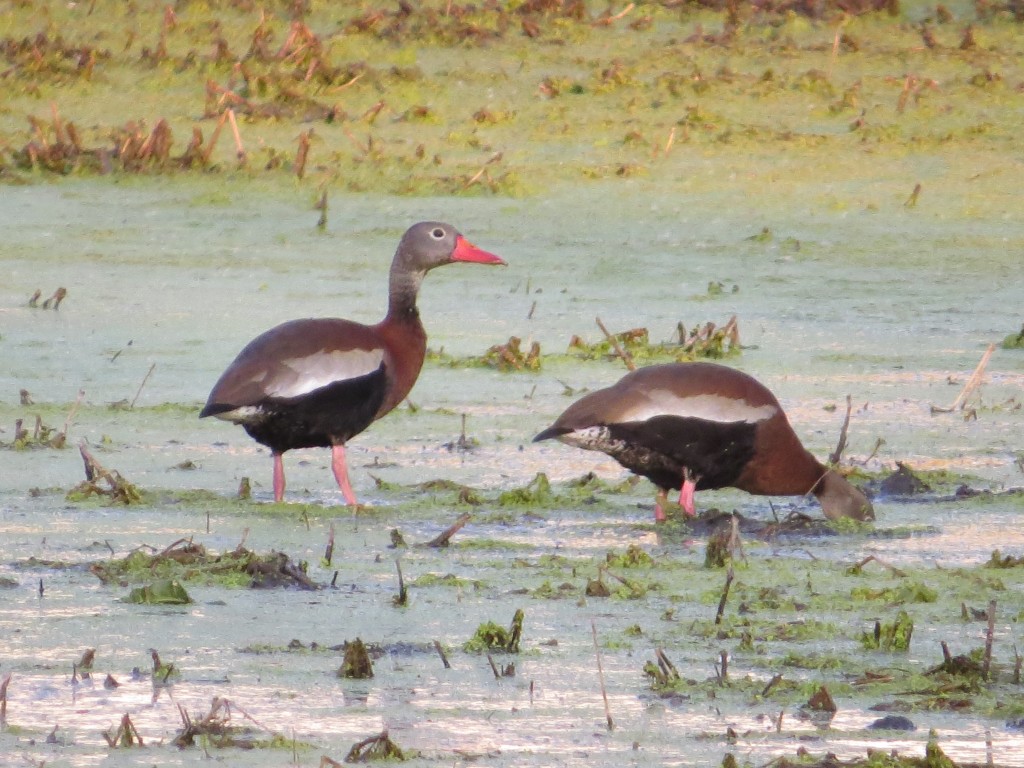
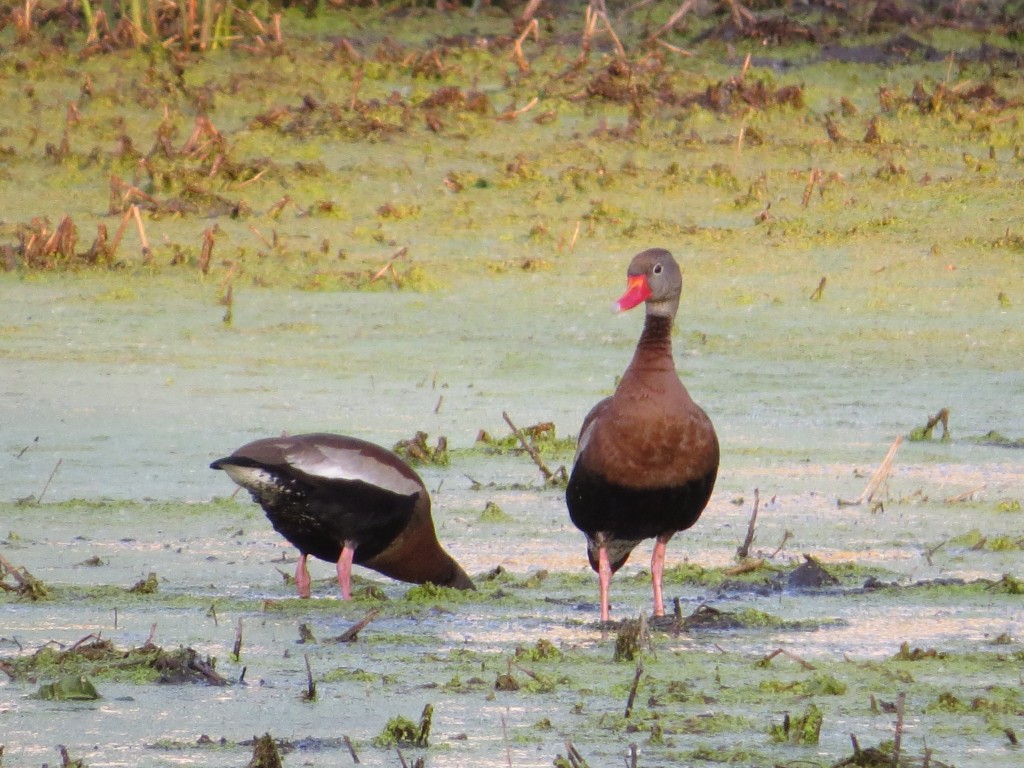 While many of the regular migrants have been AWOL or shown up in pathetic numbers, I don’t recall a better spring for figurative and literal odd ducks. While I have gotten some nifty additions to my life list this spring, the misses have numerous and sometimes painful. Nevertheless, I’ll enjoy the gifts I get. What’s next?
While many of the regular migrants have been AWOL or shown up in pathetic numbers, I don’t recall a better spring for figurative and literal odd ducks. While I have gotten some nifty additions to my life list this spring, the misses have numerous and sometimes painful. Nevertheless, I’ll enjoy the gifts I get. What’s next?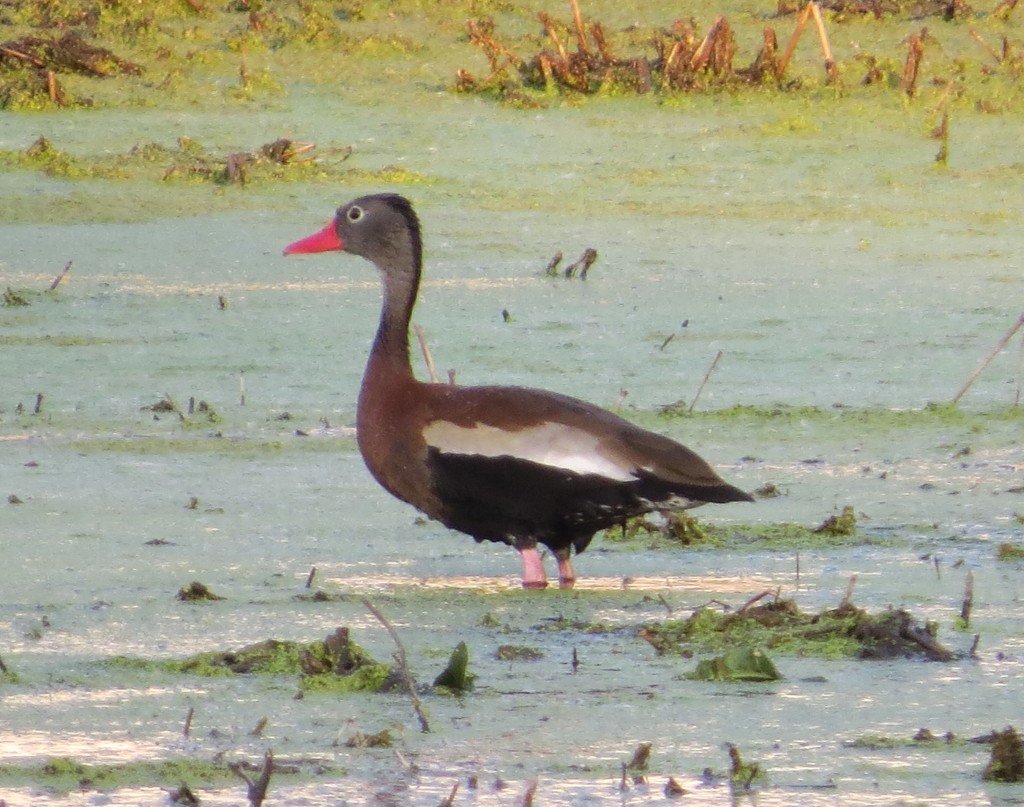
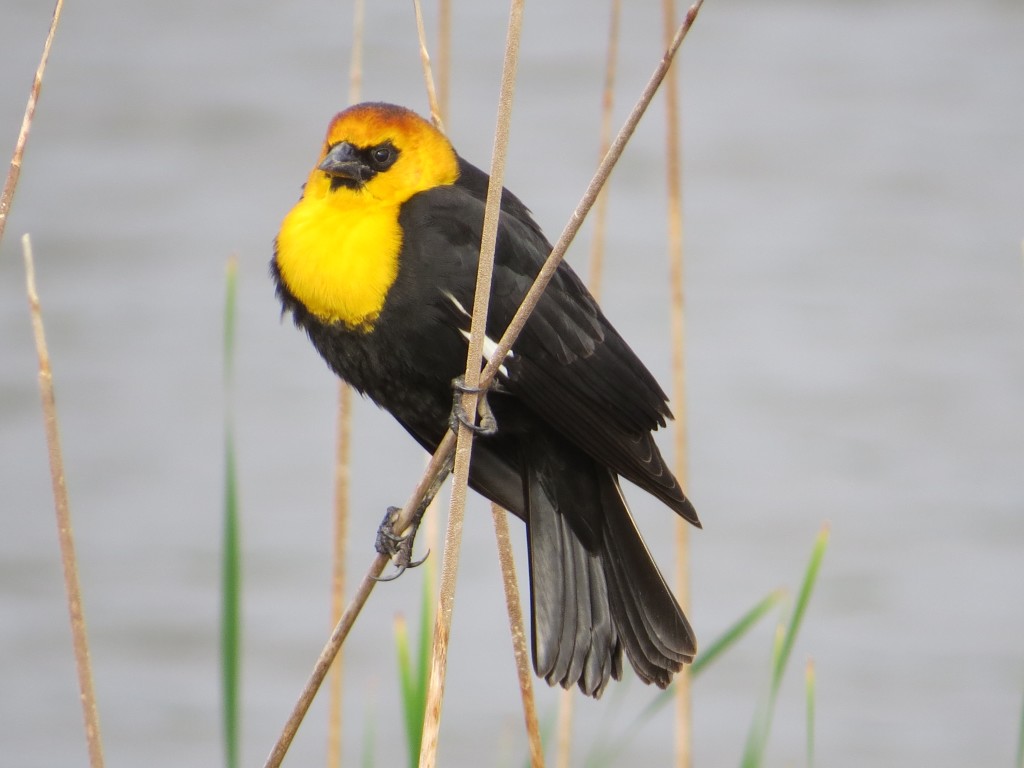
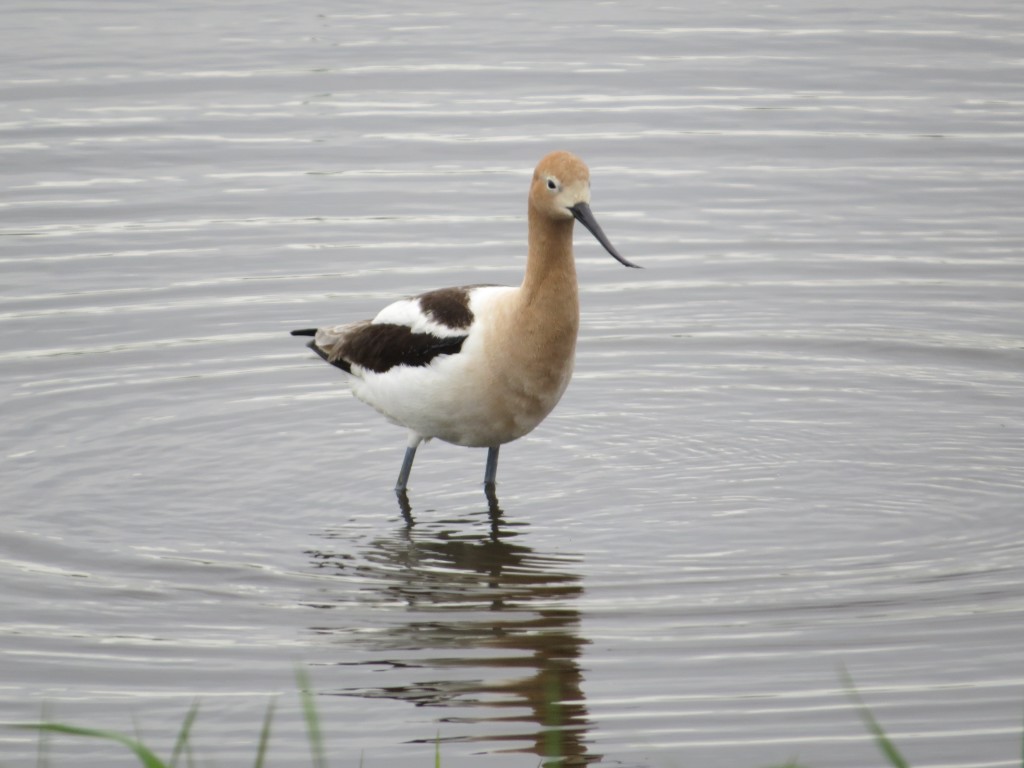
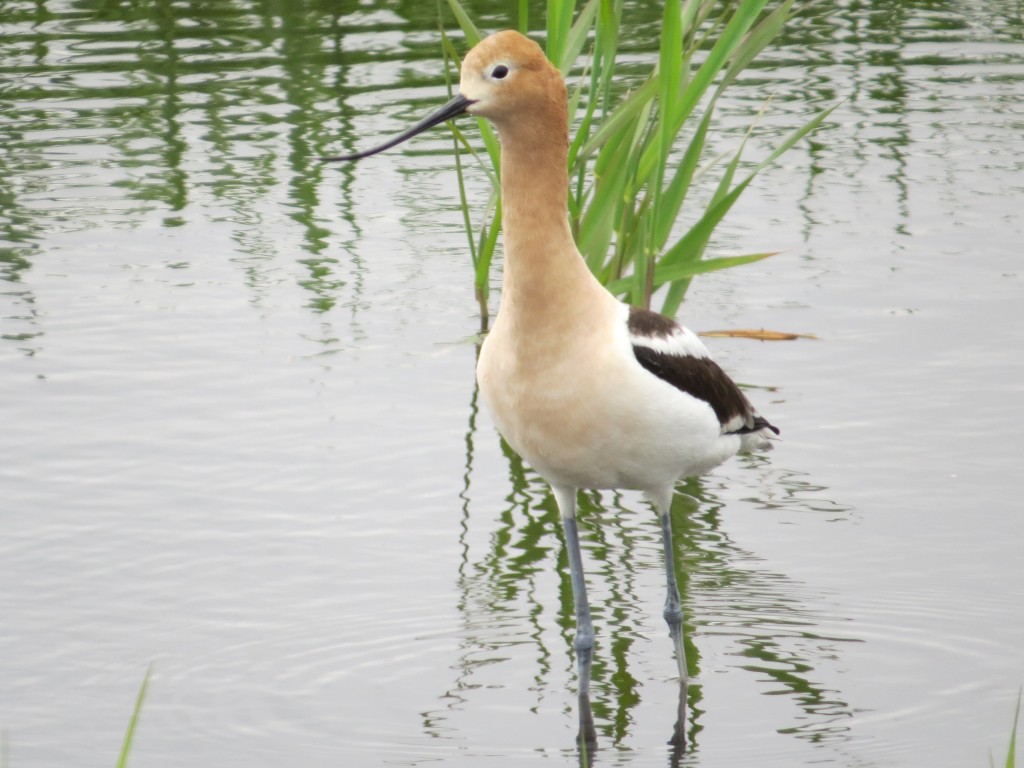 I was hoping for lifer Short-billed Dowitchers, but an Avocet is a nice consolation. Evan and I enjoyed watching this bird for 15 minutes while it chowed down.
I was hoping for lifer Short-billed Dowitchers, but an Avocet is a nice consolation. Evan and I enjoyed watching this bird for 15 minutes while it chowed down.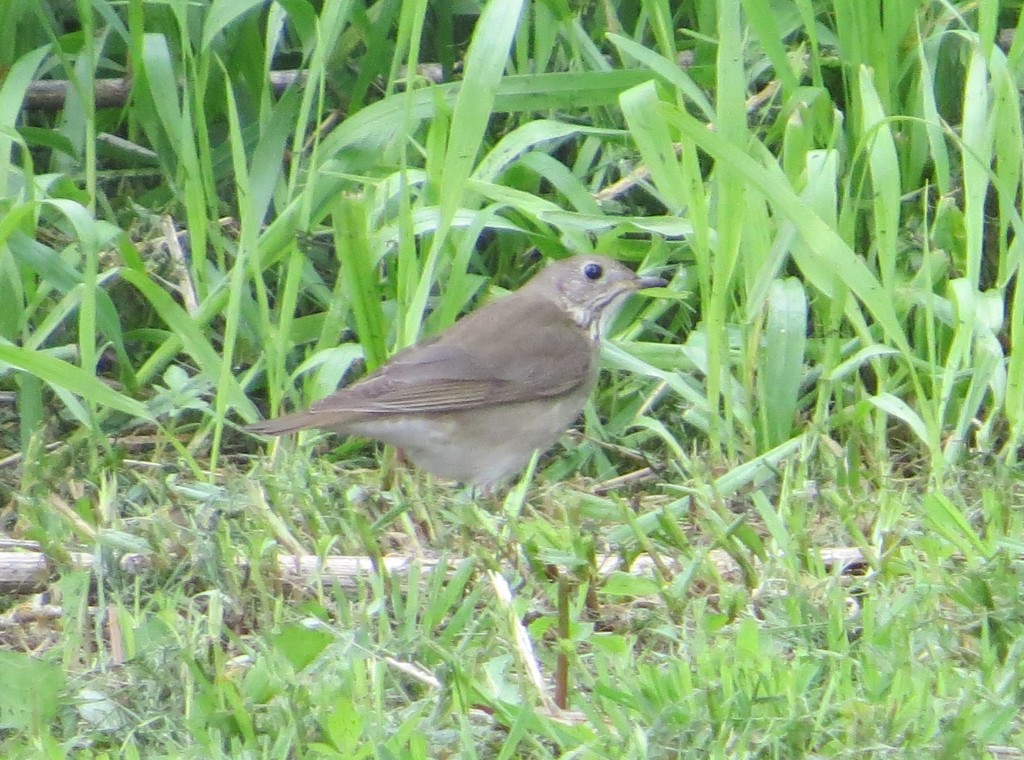 My addition of Gray-cheeked Thrush to my life list has always been tainted with doubt–mostly because I never obtained a photo to back up my sighting. While the kids admired the local Chickens and while I was Thrush sorting, I was still keeping an eye out for the main thing. It was proving harder than I thought, especially since other birders saw it just a minute before I arrived. Finally I spotted the tie-died wonder, a first year male. It wasn’t the coveted bright red adult male, but a cool lifer nonetheless. My camera had difficulty focusing on its mottled plumage.
My addition of Gray-cheeked Thrush to my life list has always been tainted with doubt–mostly because I never obtained a photo to back up my sighting. While the kids admired the local Chickens and while I was Thrush sorting, I was still keeping an eye out for the main thing. It was proving harder than I thought, especially since other birders saw it just a minute before I arrived. Finally I spotted the tie-died wonder, a first year male. It wasn’t the coveted bright red adult male, but a cool lifer nonetheless. My camera had difficulty focusing on its mottled plumage.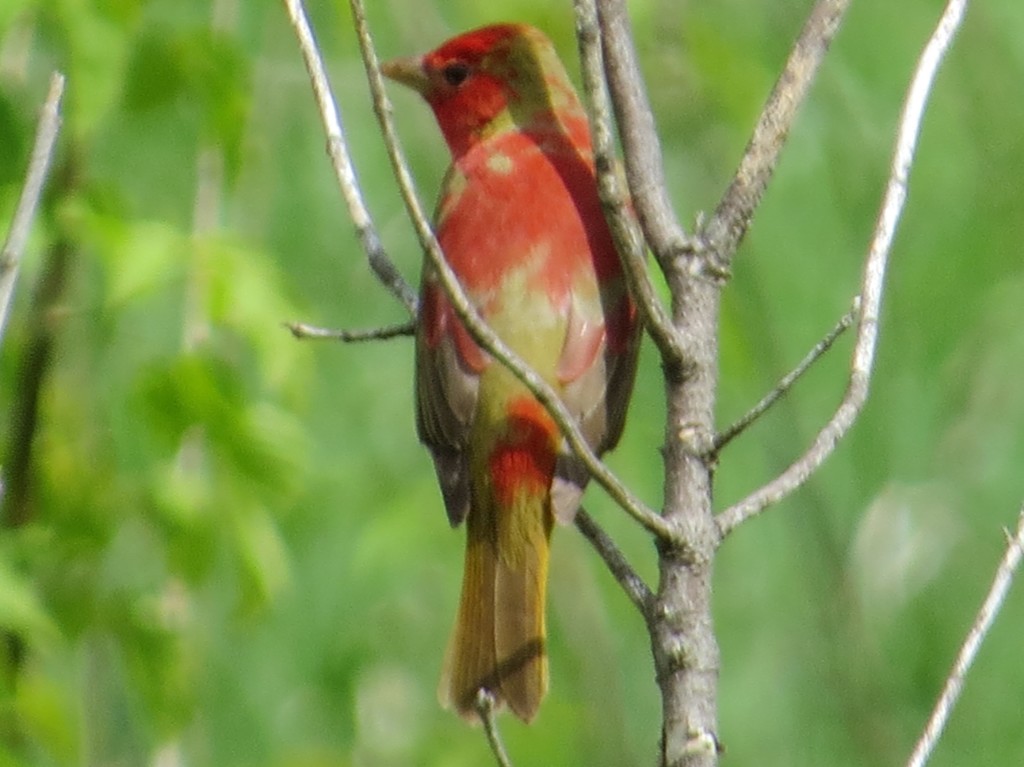
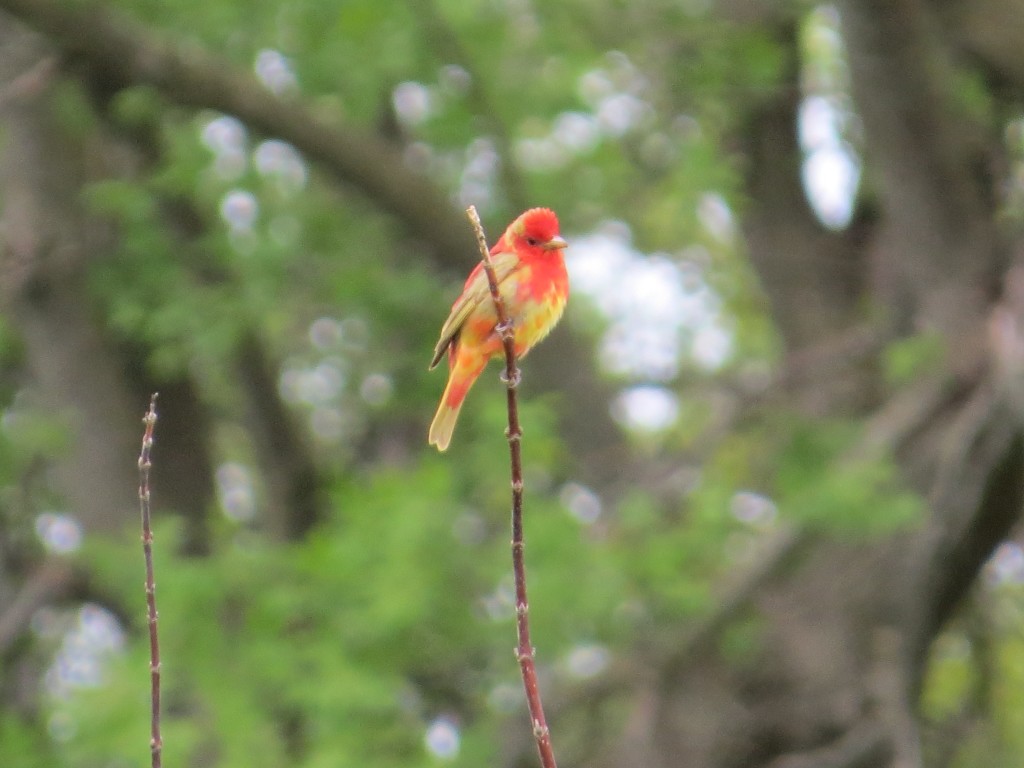
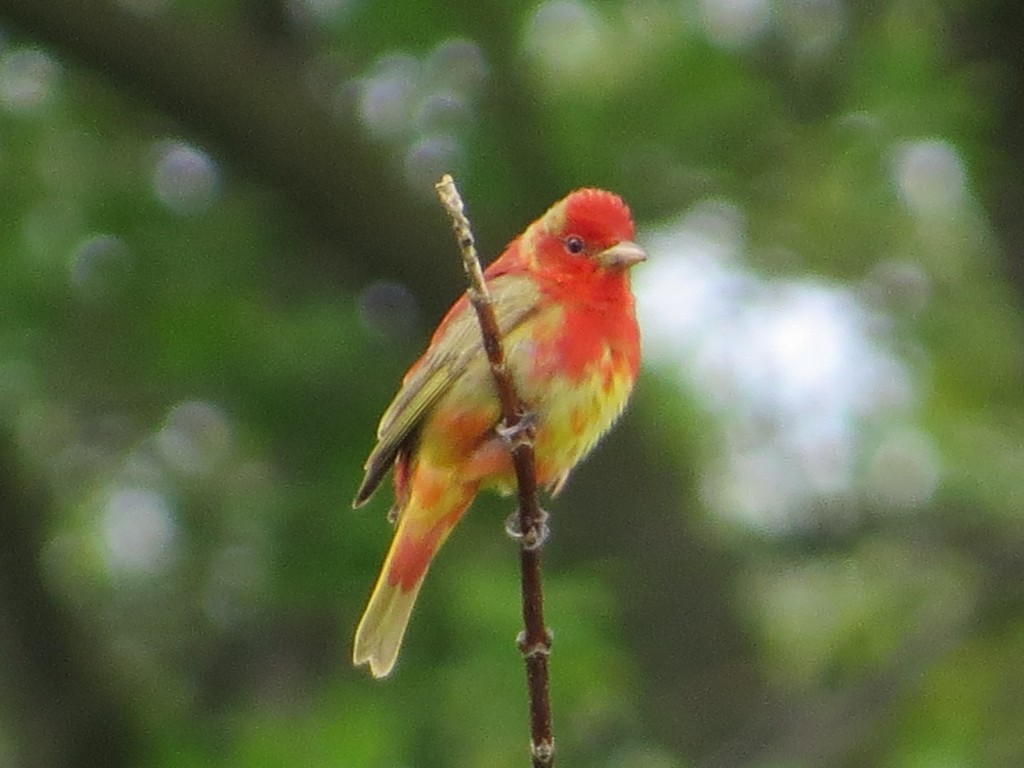

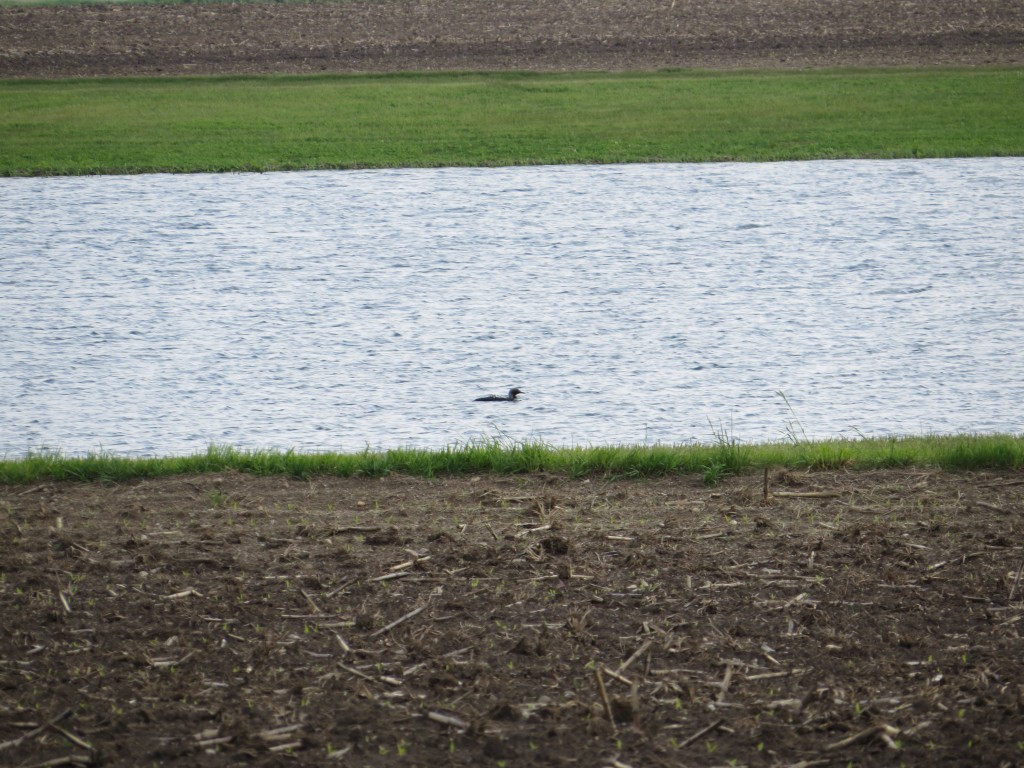 I was not anticipating such a great distance to the bird. The distance coupled with heat waves emanating from the soil made photography difficult. The temptation to trespass was real. But those tiny green specks in the soil are brand new corn plants. I did not want to tick off some farmer. I did ask a couple of neighboring residents about who owned the land and was bummed to find out the owner didn’t even live around this spot. So, I did the best I possibly could given the circumstances.
I was not anticipating such a great distance to the bird. The distance coupled with heat waves emanating from the soil made photography difficult. The temptation to trespass was real. But those tiny green specks in the soil are brand new corn plants. I did not want to tick off some farmer. I did ask a couple of neighboring residents about who owned the land and was bummed to find out the owner didn’t even live around this spot. So, I did the best I possibly could given the circumstances.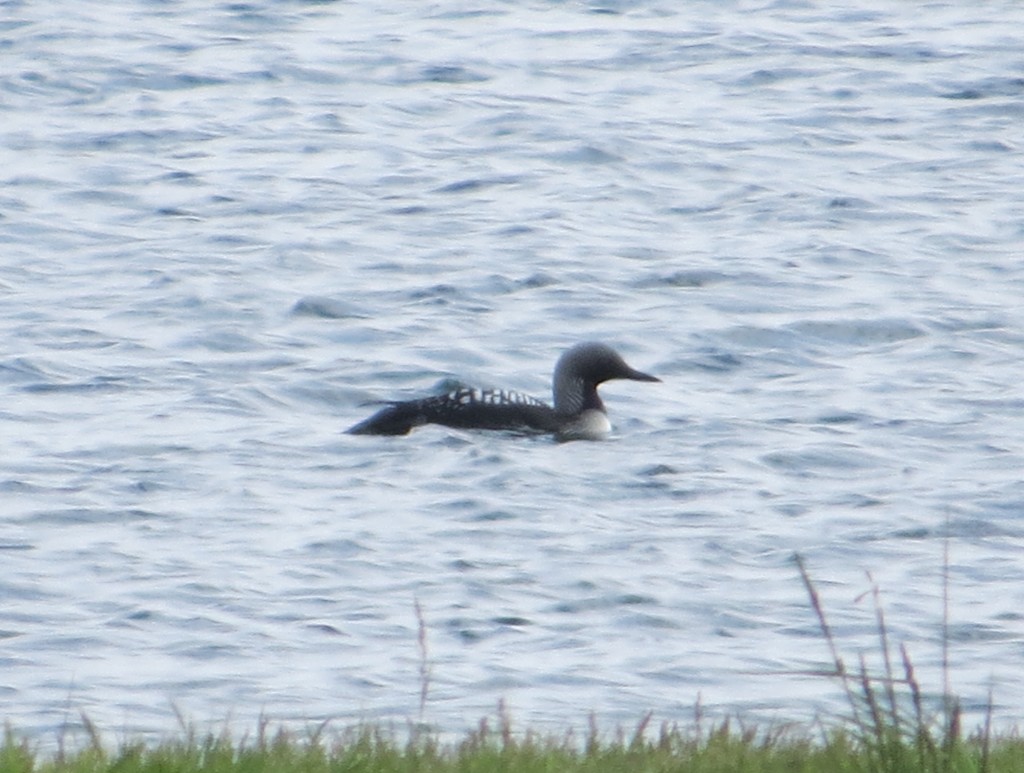
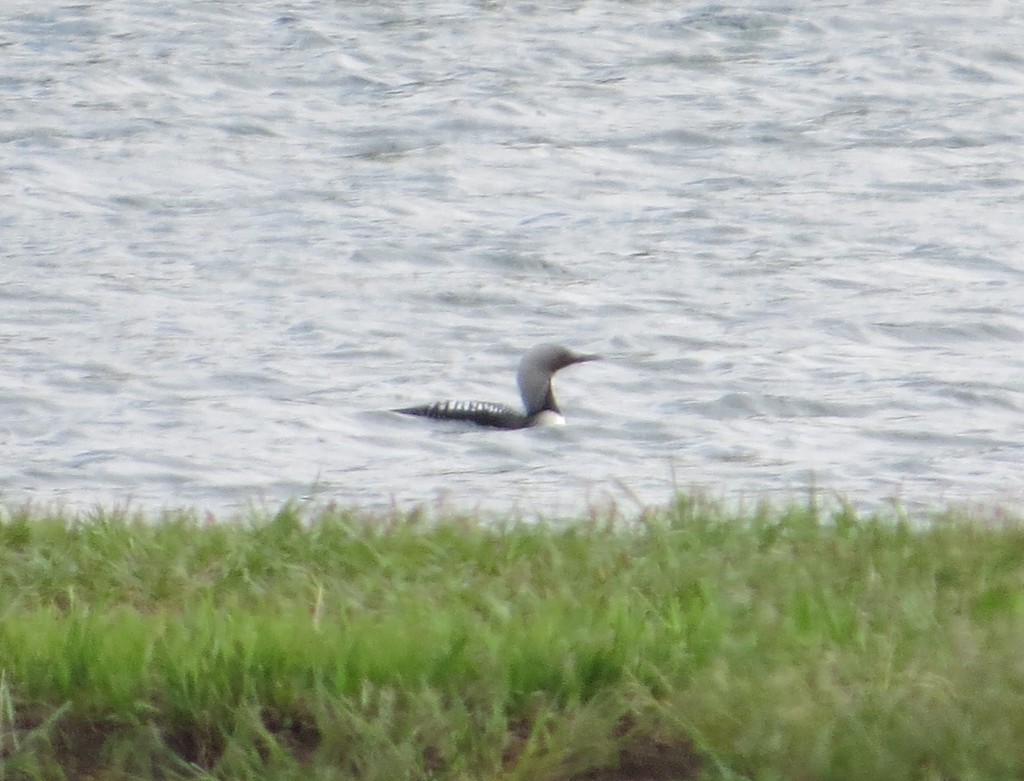 Despite the distance, this was a thrilling bird to see. It is a life bird I always imagined getting as a speck on Lake Superior and being nothing more than a check mark on my life list. I had another fun find while seeing the Loon: Janet Timmerman whose yard I was just in the day before. We shared a laugh over the double chase and enjoyed the Loon together for a bit.
Despite the distance, this was a thrilling bird to see. It is a life bird I always imagined getting as a speck on Lake Superior and being nothing more than a check mark on my life list. I had another fun find while seeing the Loon: Janet Timmerman whose yard I was just in the day before. We shared a laugh over the double chase and enjoyed the Loon together for a bit.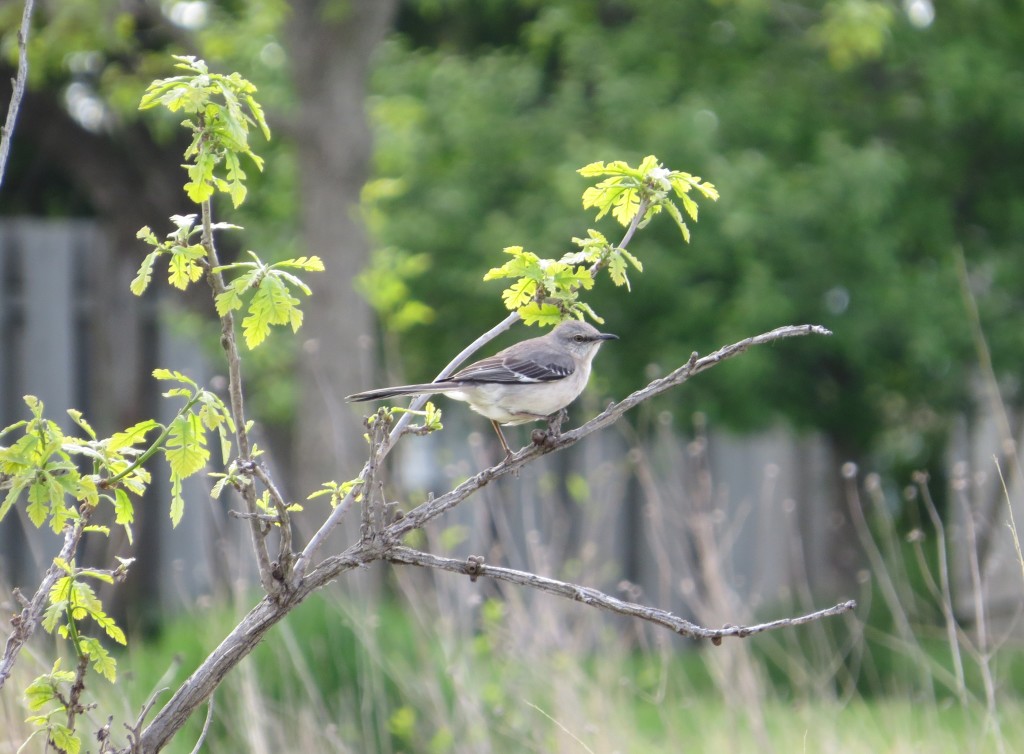
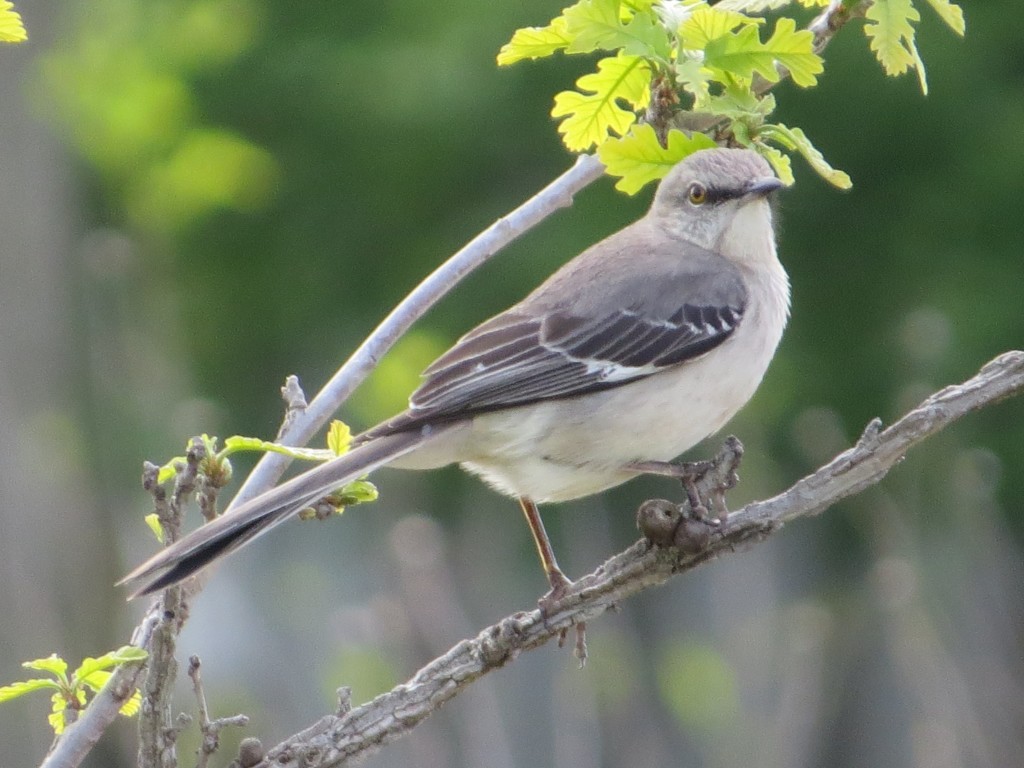
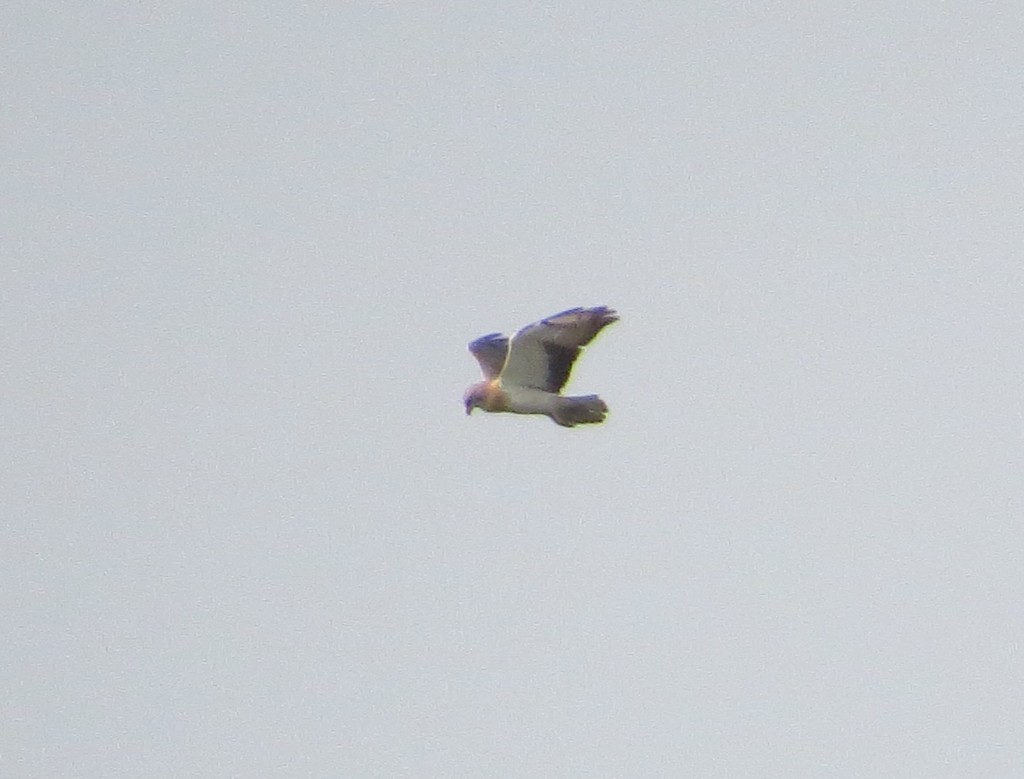
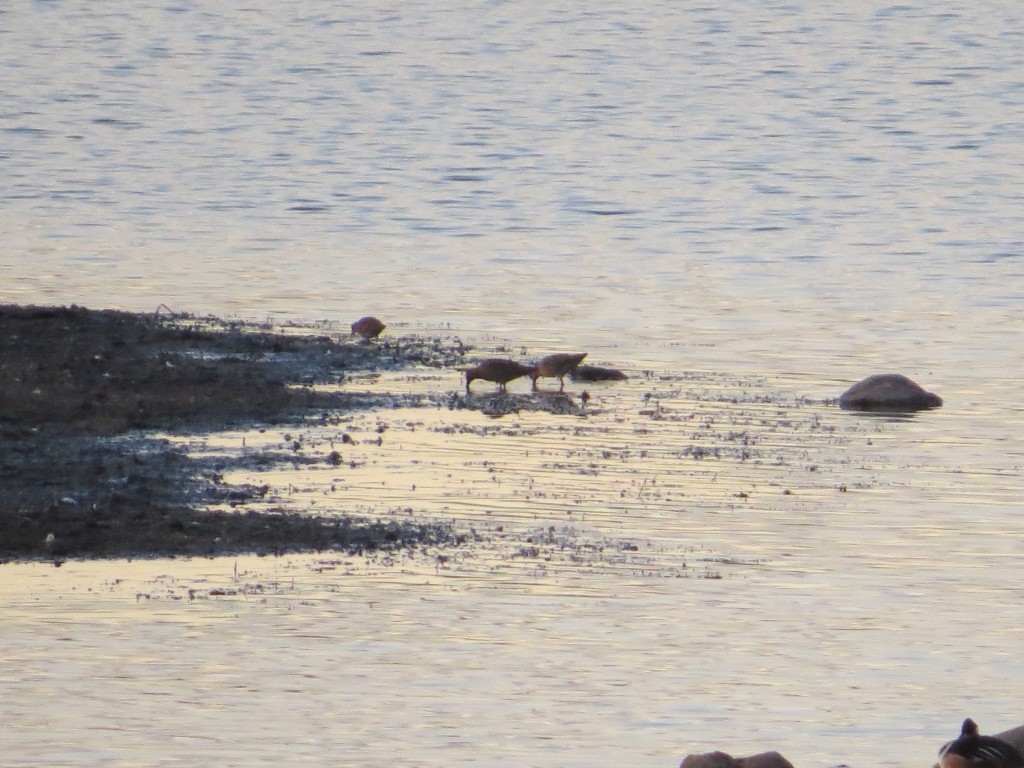
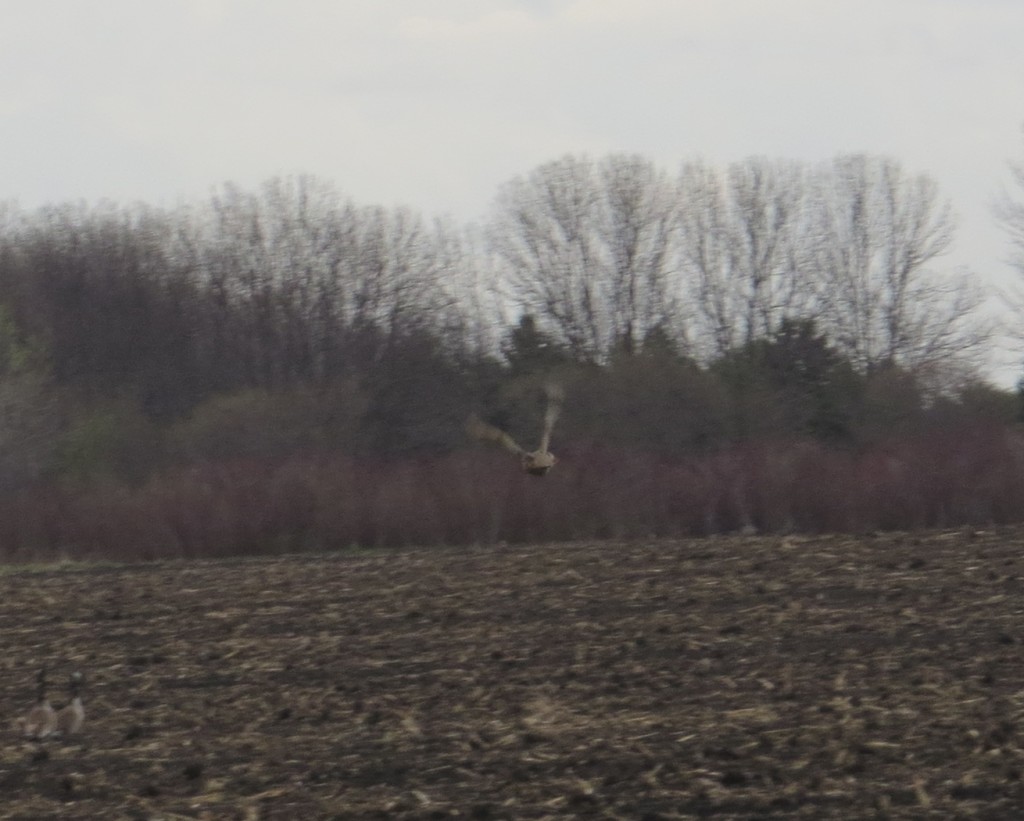 Sure, it’s a crummy photo but this was taken on the draw as I stalked the two birds for a second flush. The thrill of this encounter is tough to put into words. Gray Partridges are tough, tough birds to find in anywhere in Minnesota. They are most often seen in the dead of winter at dawn or dusk when they are feeding out in the plowed fields. Their dark bodies are easy to spot against the snow. But even this is a rare occurrence for the luckiest of birders who happen to be traveling down the right gravel road. Gray Partridges like short grass areas where the cover is “thin” and small in area, quite the opposite of Pheasants. They hold tight and can hide among little/no cover. Unless a birder is getting off the beaten path and hiking old fence lines, drainage ditches, and abandoned farm sites, they likely will never see this bird. I actually have seen this bird before and in Minnesota, but I did so as a Pheasant hunter. A few years before I was a birder, a buddy and I kicked up a covey of about 10 birds and harvested one (it was and still is a legal game bird). But that was the last time I laid eyes on one. Since then I have started doubting their existence and begun to think, as some bird bloggers have, that this is a mythical bird. The thought of one in my own county was even more preposterous. Yet with a new county bird–and an exceptional one at that!–count me among the believers again.
Sure, it’s a crummy photo but this was taken on the draw as I stalked the two birds for a second flush. The thrill of this encounter is tough to put into words. Gray Partridges are tough, tough birds to find in anywhere in Minnesota. They are most often seen in the dead of winter at dawn or dusk when they are feeding out in the plowed fields. Their dark bodies are easy to spot against the snow. But even this is a rare occurrence for the luckiest of birders who happen to be traveling down the right gravel road. Gray Partridges like short grass areas where the cover is “thin” and small in area, quite the opposite of Pheasants. They hold tight and can hide among little/no cover. Unless a birder is getting off the beaten path and hiking old fence lines, drainage ditches, and abandoned farm sites, they likely will never see this bird. I actually have seen this bird before and in Minnesota, but I did so as a Pheasant hunter. A few years before I was a birder, a buddy and I kicked up a covey of about 10 birds and harvested one (it was and still is a legal game bird). But that was the last time I laid eyes on one. Since then I have started doubting their existence and begun to think, as some bird bloggers have, that this is a mythical bird. The thought of one in my own county was even more preposterous. Yet with a new county bird–and an exceptional one at that!–count me among the believers again.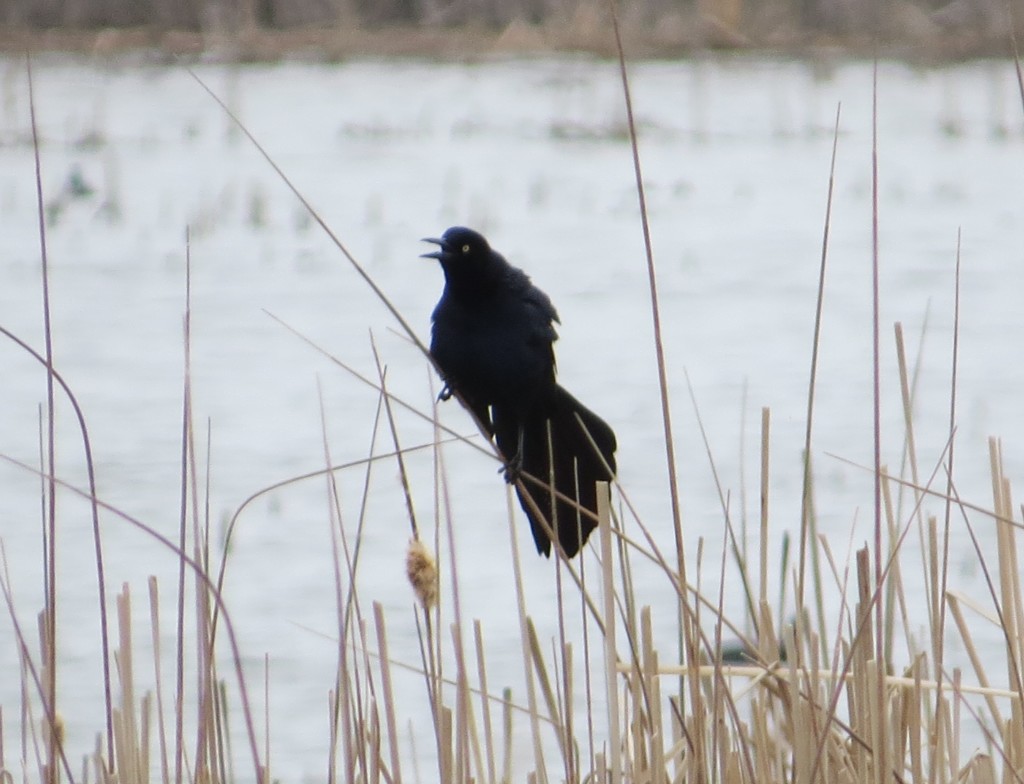
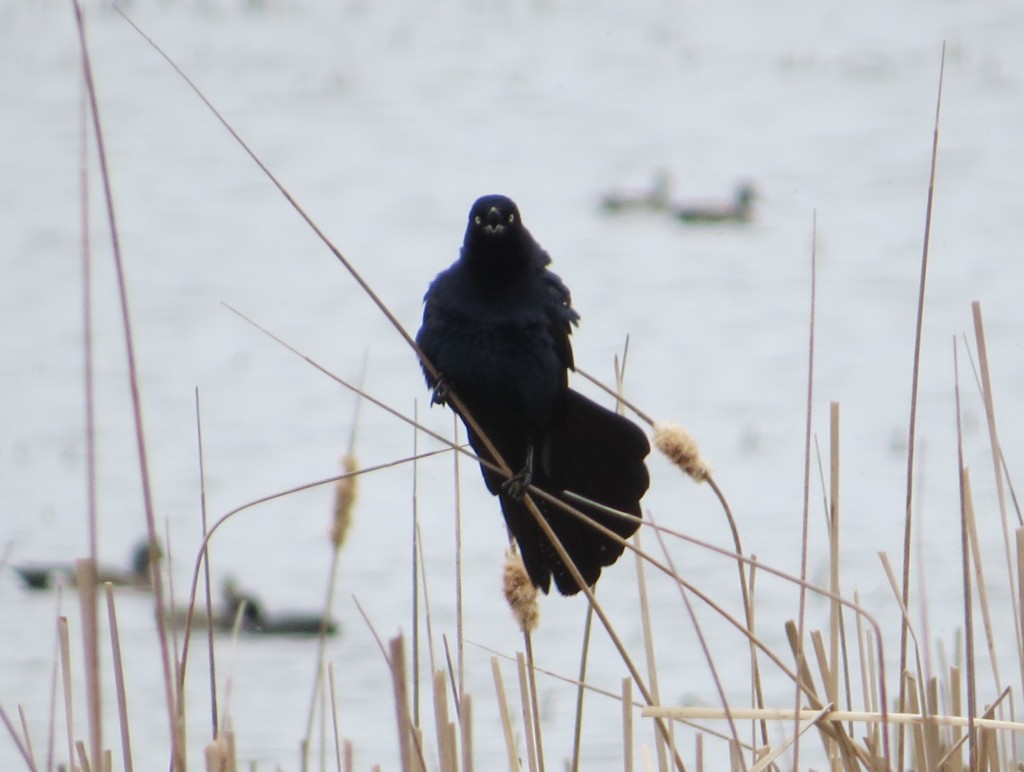 New yard bird (the state bird!), new county bird(!!), eBird list harmony, new Minnesota bird, 300th MN bird–all in one day. Good times!!
New yard bird (the state bird!), new county bird(!!), eBird list harmony, new Minnesota bird, 300th MN bird–all in one day. Good times!!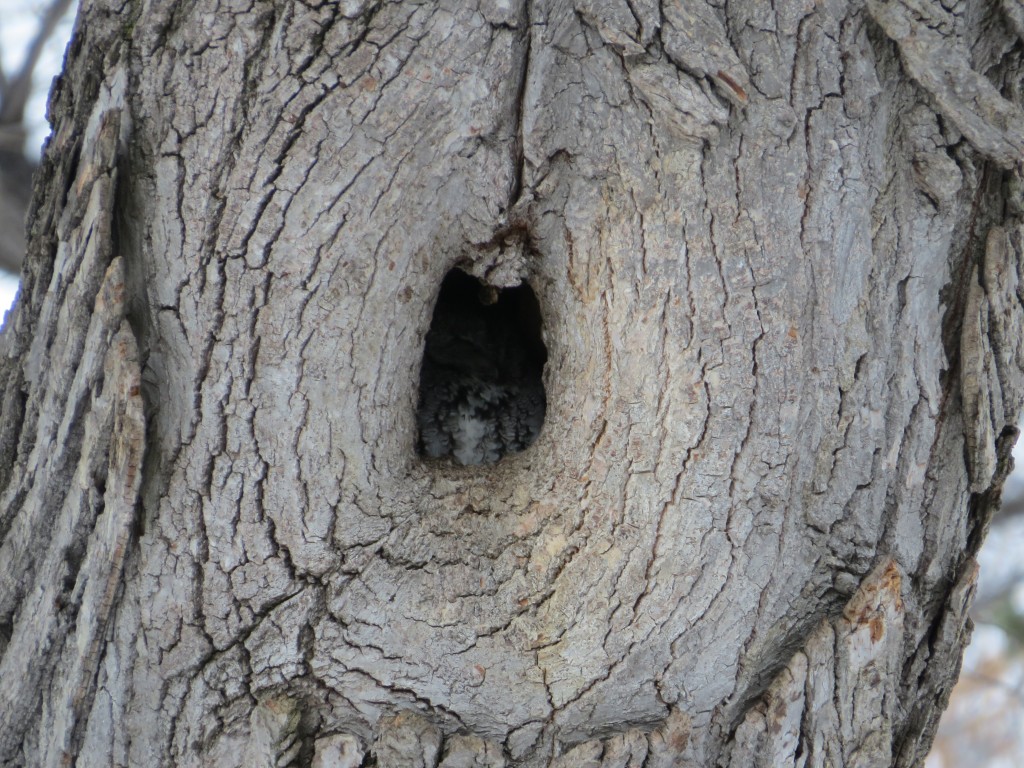 This Eastern Screech-Owl was brought to the public’s attention this past week when skillful Twin Cities Owler Erik Berg discovered it on a regular cavity check in Minneapolis. Since then, the bird paparazzi have been encamped underneath this tree.
This Eastern Screech-Owl was brought to the public’s attention this past week when skillful Twin Cities Owler Erik Berg discovered it on a regular cavity check in Minneapolis. Since then, the bird paparazzi have been encamped underneath this tree.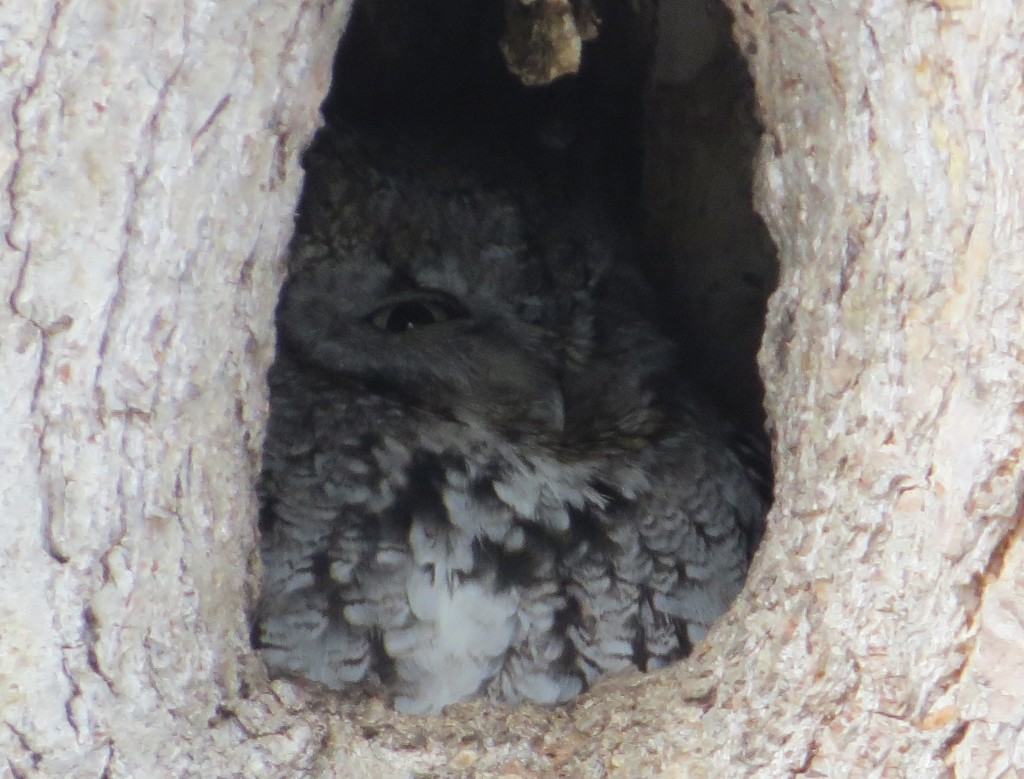 Since this Owl was just 5 minutes from my brother’s house, the kids came along and got some solid cousin time. Jason joined me on this Owl check-up and got some great looks through others’ scopes.
Since this Owl was just 5 minutes from my brother’s house, the kids came along and got some solid cousin time. Jason joined me on this Owl check-up and got some great looks through others’ scopes.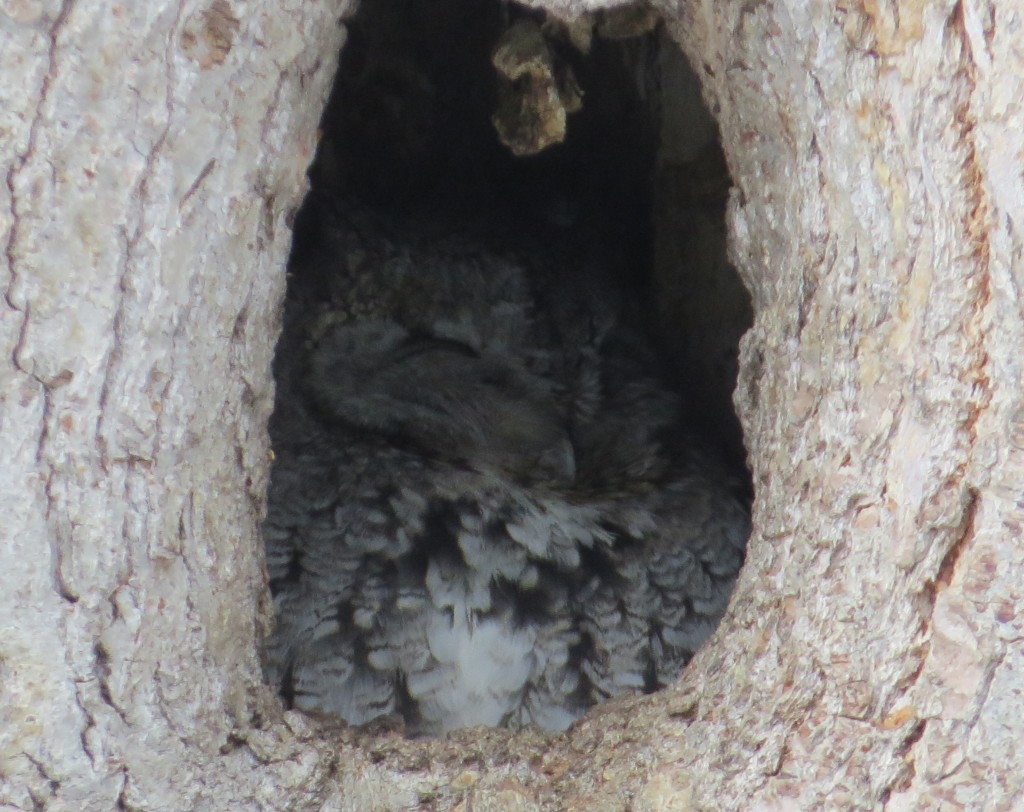 After going back to Jason’s house, I came back a little later for one last check hoping the Owl would be more in the open. It was slightly better this time.
After going back to Jason’s house, I came back a little later for one last check hoping the Owl would be more in the open. It was slightly better this time.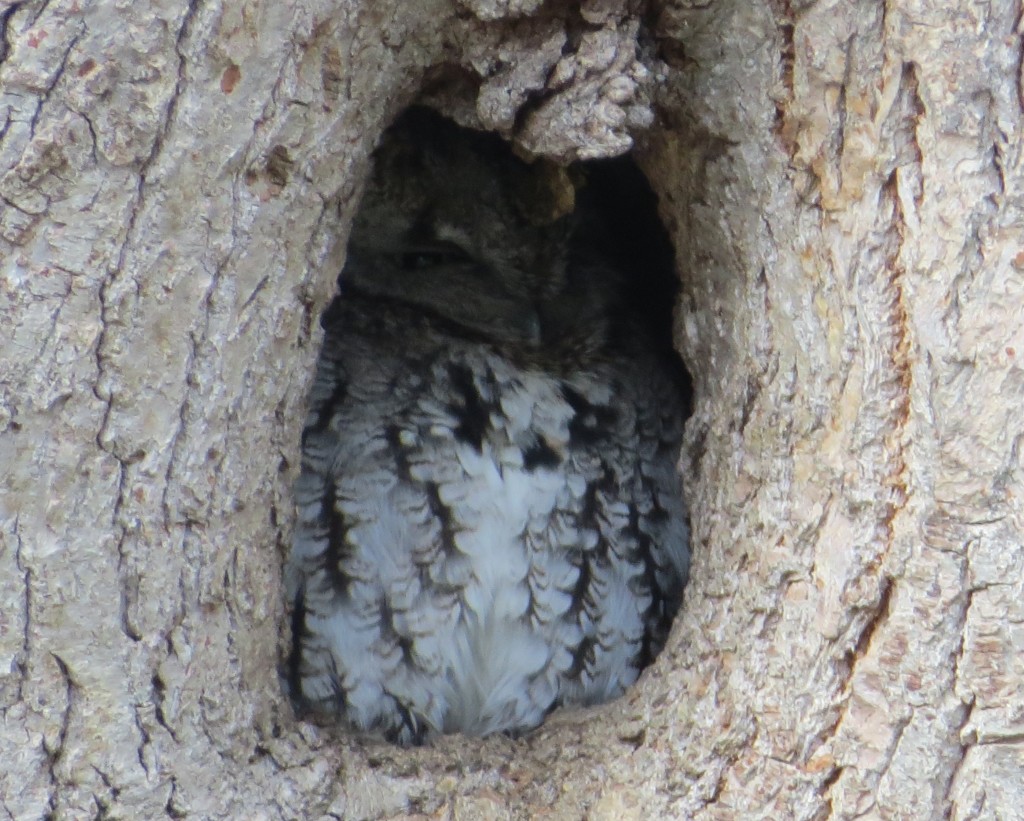 Rest up, little buddy, you may have quite the visitor to entertain in a few months.
Rest up, little buddy, you may have quite the visitor to entertain in a few months.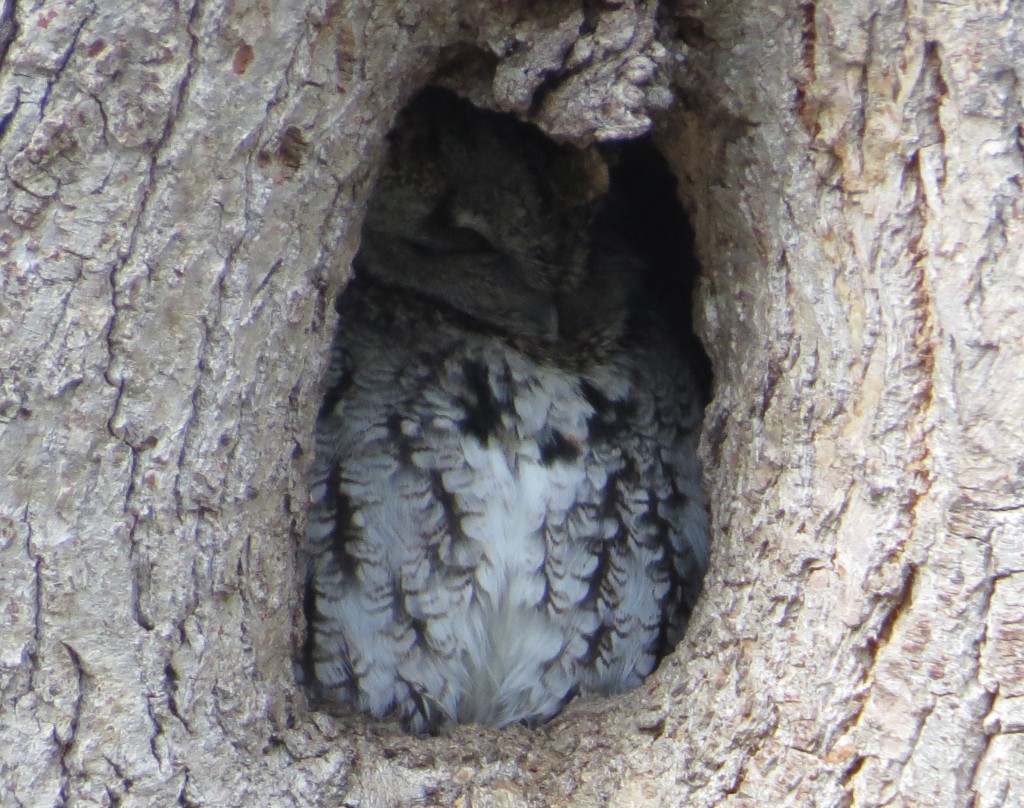
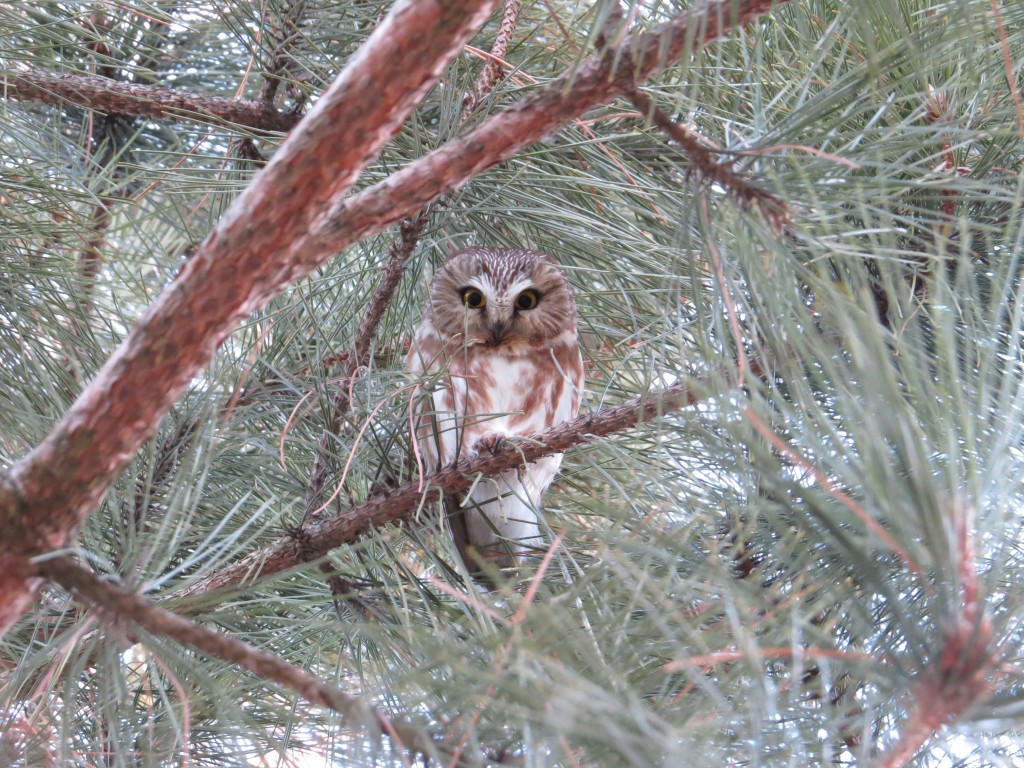 The Saw-whet is not much bigger than a pop can. I don’t think I’ve seen an animal that’s cuter. Jeremy’s friends pinpointed it for us right away. That was probably a good thing…
The Saw-whet is not much bigger than a pop can. I don’t think I’ve seen an animal that’s cuter. Jeremy’s friends pinpointed it for us right away. That was probably a good thing…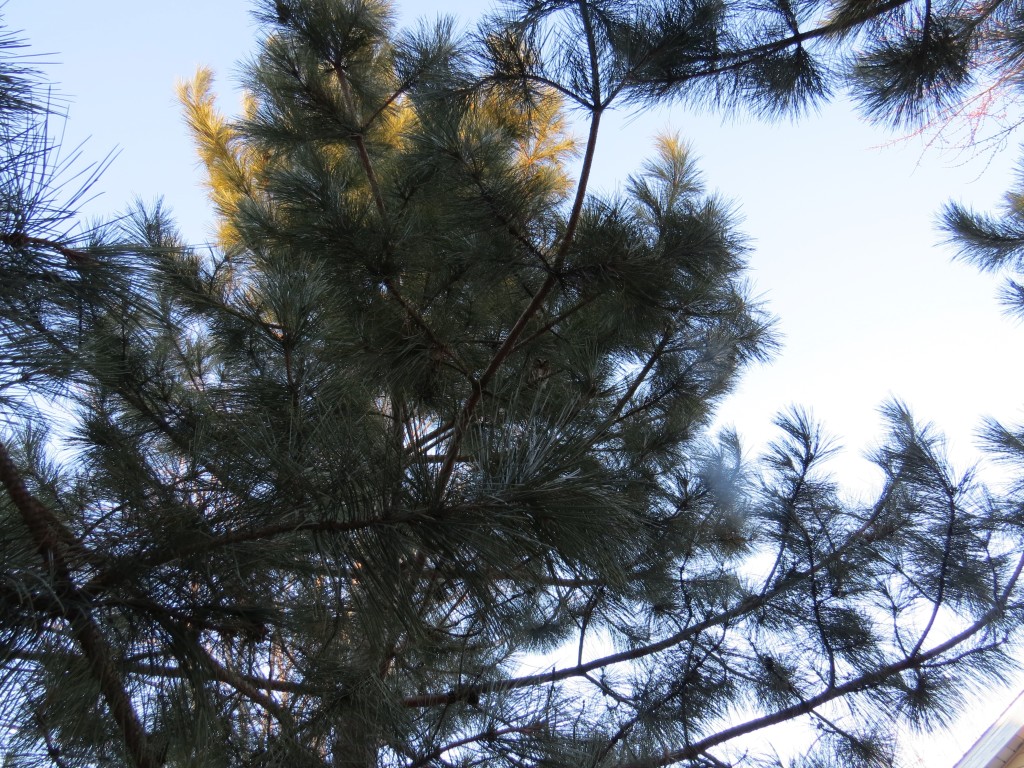
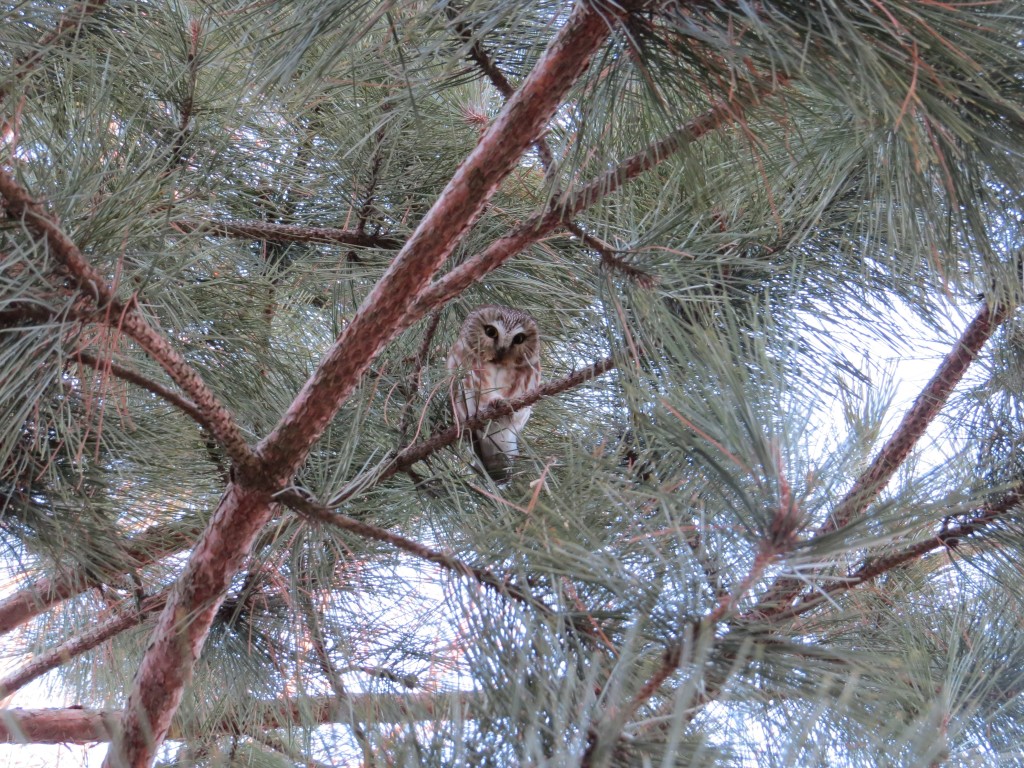
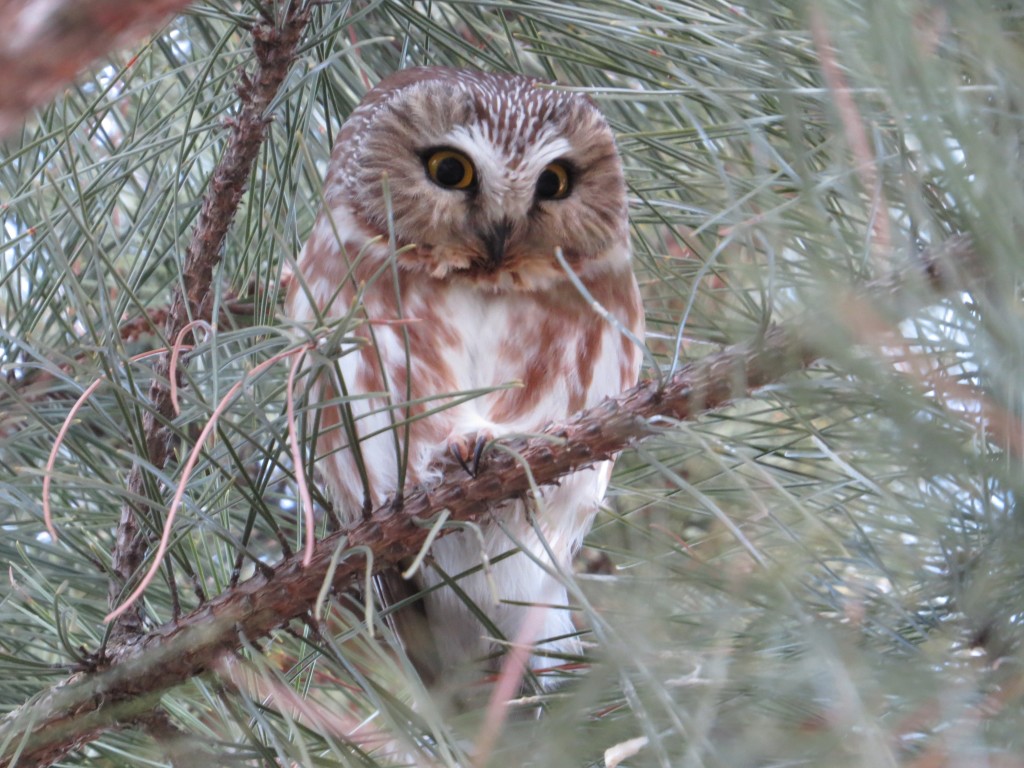 Occasionally it looked at me.
Occasionally it looked at me.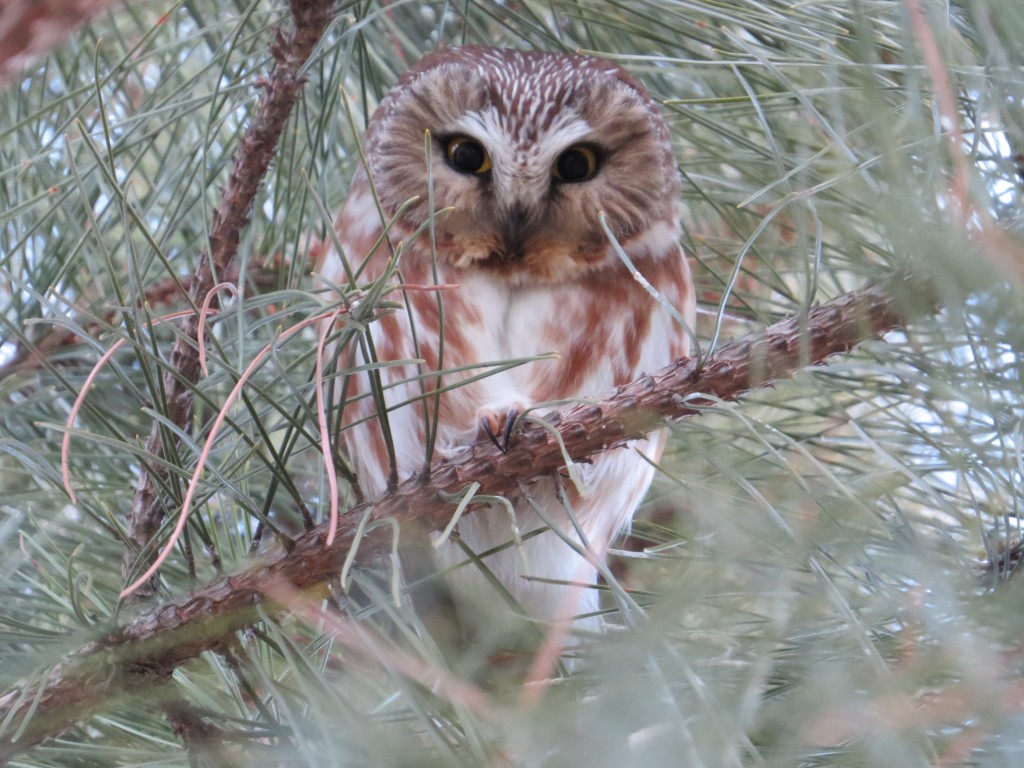 But it was mostly captivated by Steve.
But it was mostly captivated by Steve.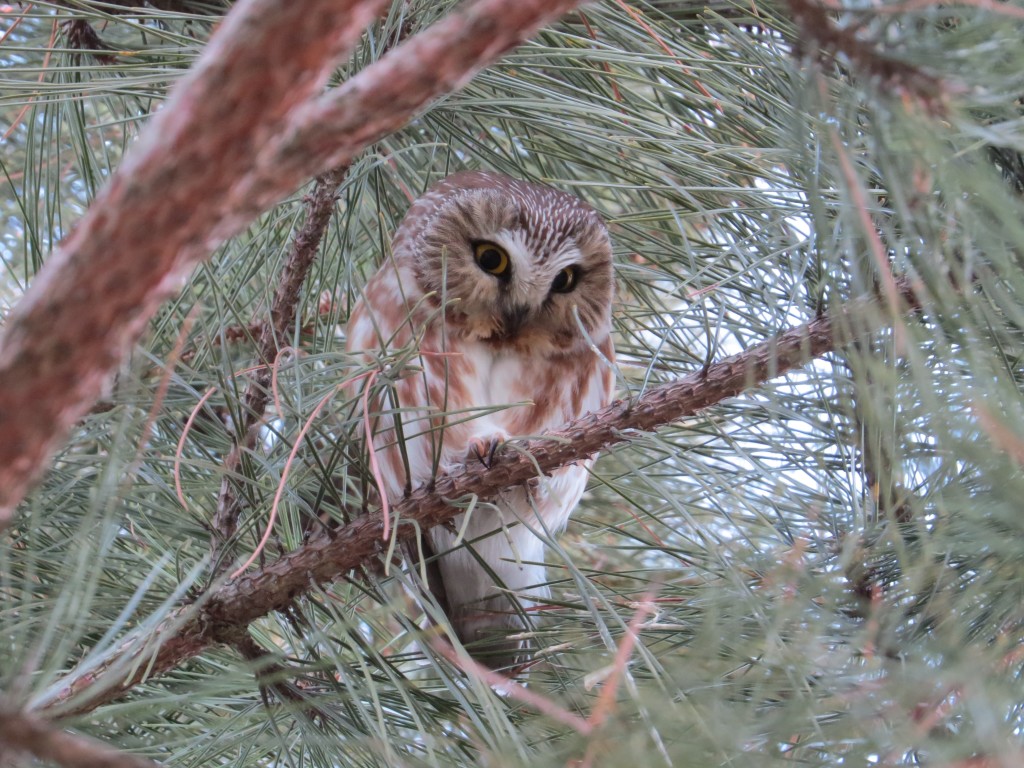
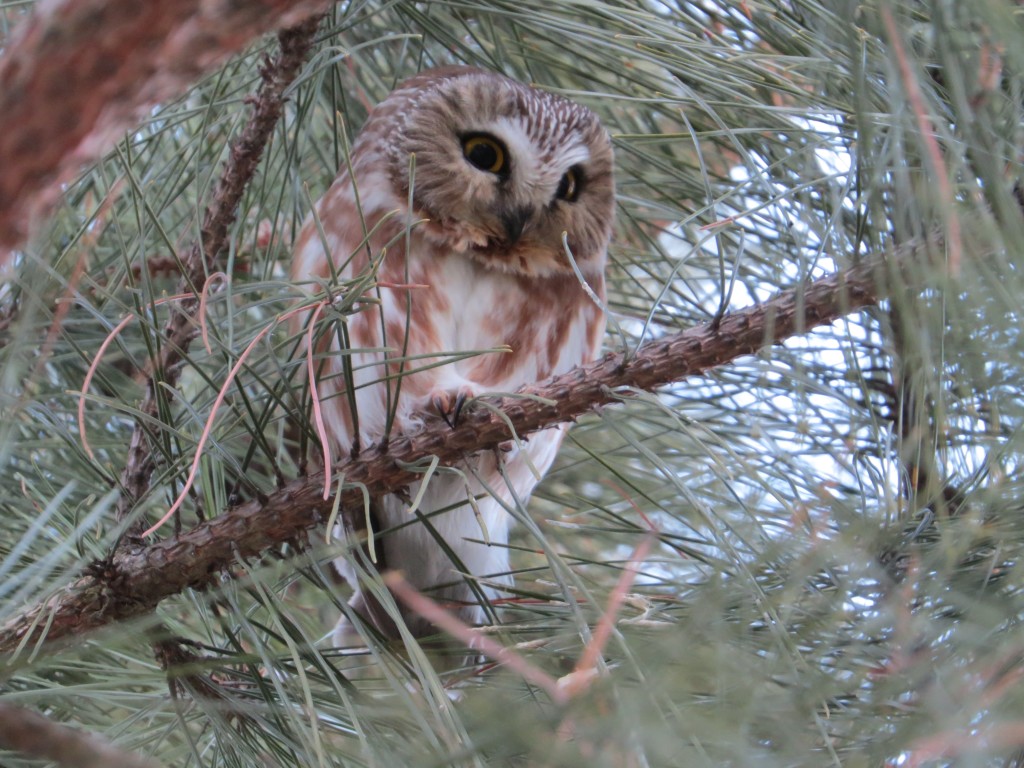 What was fascinating to me was how sloth-like this Owl was in moving its head. The movement was almost indiscernible. The fact that we were finally looking at a real Northern Saw-whet Owl combined with a close encounter with a tame bird makes this one of the best Owl experiences I’ve ever had.
What was fascinating to me was how sloth-like this Owl was in moving its head. The movement was almost indiscernible. The fact that we were finally looking at a real Northern Saw-whet Owl combined with a close encounter with a tame bird makes this one of the best Owl experiences I’ve ever had.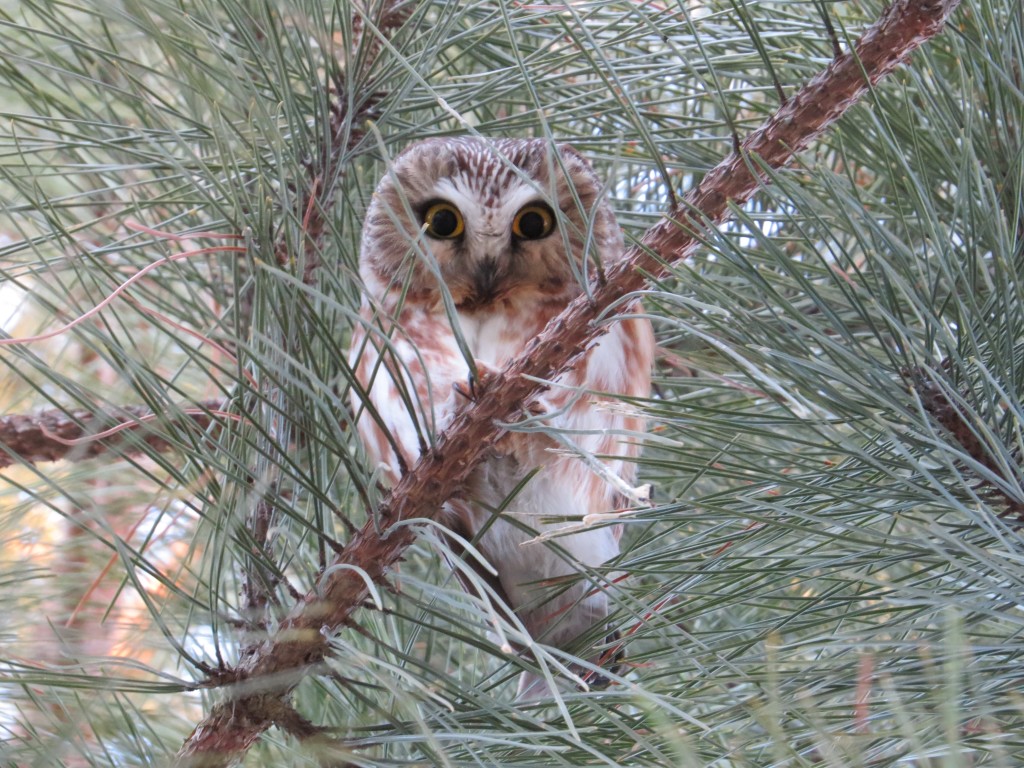 After taking last looks at the Owl and admiring the massive pile of pellets and all the whitewash from an Owl that has sat in this same spot every day for the winter, Steve and I thanked the homeowners and headed home feeling good…or evil. Steve called up his twin brother who is also a birder and rubbed in his new lifer. I went to the liquor store.
After taking last looks at the Owl and admiring the massive pile of pellets and all the whitewash from an Owl that has sat in this same spot every day for the winter, Steve and I thanked the homeowners and headed home feeling good…or evil. Steve called up his twin brother who is also a birder and rubbed in his new lifer. I went to the liquor store. Willmar, of course, sent its own small delegation of eager birders to the Great Birder Assembly. Joining me in the pursuit of a shared, epic lifer were Randy Frederickson and Joel Schmidt. The gathering also gave my yearly and life birder lists a boost.
Willmar, of course, sent its own small delegation of eager birders to the Great Birder Assembly. Joining me in the pursuit of a shared, epic lifer were Randy Frederickson and Joel Schmidt. The gathering also gave my yearly and life birder lists a boost. Here’s what all the fuss is about:
Here’s what all the fuss is about:


 Conditions for viewing the IVGU were awful: wave action from Lake Superior had created a thick glaze of ice over every place an observer might stand. Never have I feared a concussion or wished I owned cleats more. It was downright dangerous. Even the Ivory walked with trepidation.
Conditions for viewing the IVGU were awful: wave action from Lake Superior had created a thick glaze of ice over every place an observer might stand. Never have I feared a concussion or wished I owned cleats more. It was downright dangerous. Even the Ivory walked with trepidation. At one point a birder next to me didn’t really know how to proceed off the icy knoll on which we stood. I was getting annoyed with his prolonged hesitation. Then I felt like a complete jerk when the older fellow asked me if I would take his arm and help him down. As I gripped his quivering arm, I realized that this could be me in 30 or so years. It was a reminder of how quickly life moves and why events like this are so important, why we need to experience the phenomenal while we can. Going with friends, like Randy and Joel, make it even better, especially when celebratory beers are had at a place like Bent Paddle Brewhouse.
At one point a birder next to me didn’t really know how to proceed off the icy knoll on which we stood. I was getting annoyed with his prolonged hesitation. Then I felt like a complete jerk when the older fellow asked me if I would take his arm and help him down. As I gripped his quivering arm, I realized that this could be me in 30 or so years. It was a reminder of how quickly life moves and why events like this are so important, why we need to experience the phenomenal while we can. Going with friends, like Randy and Joel, make it even better, especially when celebratory beers are had at a place like Bent Paddle Brewhouse. Here was an immature bird that is Thayer’s/Iceland intergrade. The local Larus Jedi call him Stumpy because of his missing tail.
Here was an immature bird that is Thayer’s/Iceland intergrade. The local Larus Jedi call him Stumpy because of his missing tail. We did see a couple of adult Thayer’s but no Glaucous Gulls this time. Since I got the full Gull smorgasbord a month ago, besides the Ivory I was most excited about all the American Black Ducks. I counted well over a dozen among the 300 Mallards. They really do stand out and the proximity and sunlight made them especially photogenic on this gorgeous day. This is a duck I just don’t see enough, so this was quite enjoyable.
We did see a couple of adult Thayer’s but no Glaucous Gulls this time. Since I got the full Gull smorgasbord a month ago, besides the Ivory I was most excited about all the American Black Ducks. I counted well over a dozen among the 300 Mallards. They really do stand out and the proximity and sunlight made them especially photogenic on this gorgeous day. This is a duck I just don’t see enough, so this was quite enjoyable.

 We lingered around Canal Park for a couple hours hoping to find Joel a Great Black-backed Gull lifer, but it just wasn’t in the cards. What was in the cards was the arrival of the longest ship known to the Great Lakes, the 1014-foot long Paul R. Tregurtha:
We lingered around Canal Park for a couple hours hoping to find Joel a Great Black-backed Gull lifer, but it just wasn’t in the cards. What was in the cards was the arrival of the longest ship known to the Great Lakes, the 1014-foot long Paul R. Tregurtha:


 An accidental rare species from the Arctic and the largest ship on the Great Lakes coming in to port made for a most exciting outing. We had one more errand that would put this day completely up and over the top–crossing the Blatnik Bridge to Superior, Wisconsin to pick up a 2016 Gyrfalcon! In less than a year’s time I have seen three Gyrfalcons, which still is not enough because like Jello, there’s always room for Gyr. Photos at this distance were practically impossible, but I’m okay with
An accidental rare species from the Arctic and the largest ship on the Great Lakes coming in to port made for a most exciting outing. We had one more errand that would put this day completely up and over the top–crossing the Blatnik Bridge to Superior, Wisconsin to pick up a 2016 Gyrfalcon! In less than a year’s time I have seen three Gyrfalcons, which still is not enough because like Jello, there’s always room for Gyr. Photos at this distance were practically impossible, but I’m okay with 

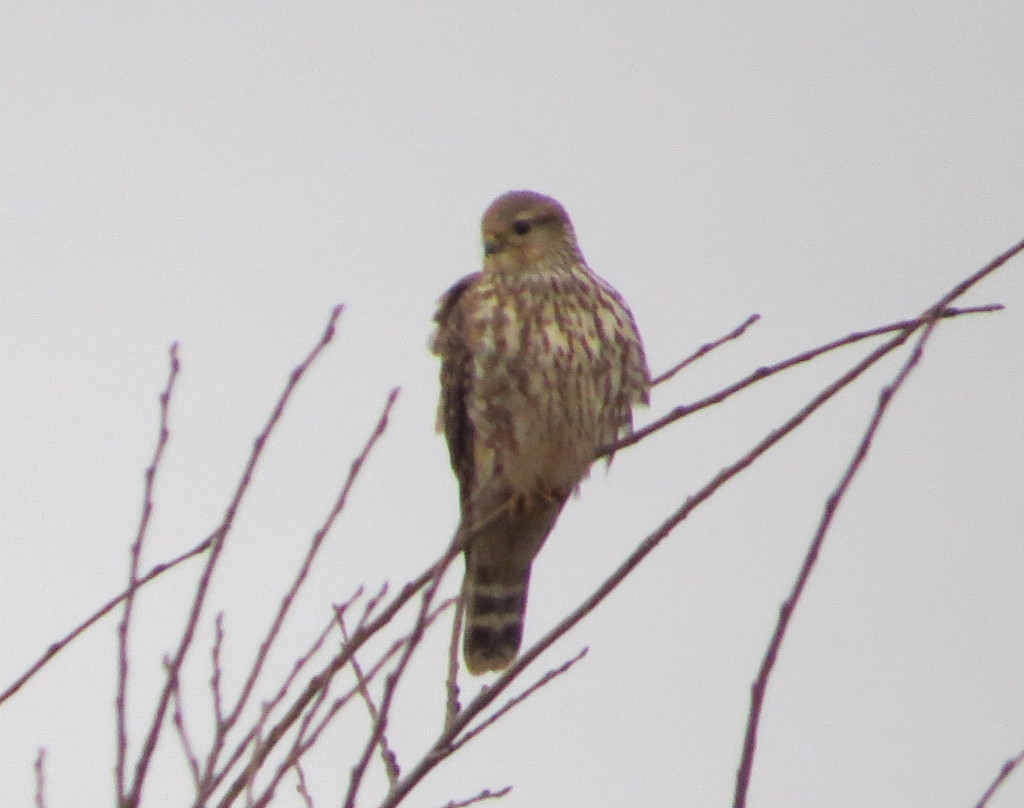
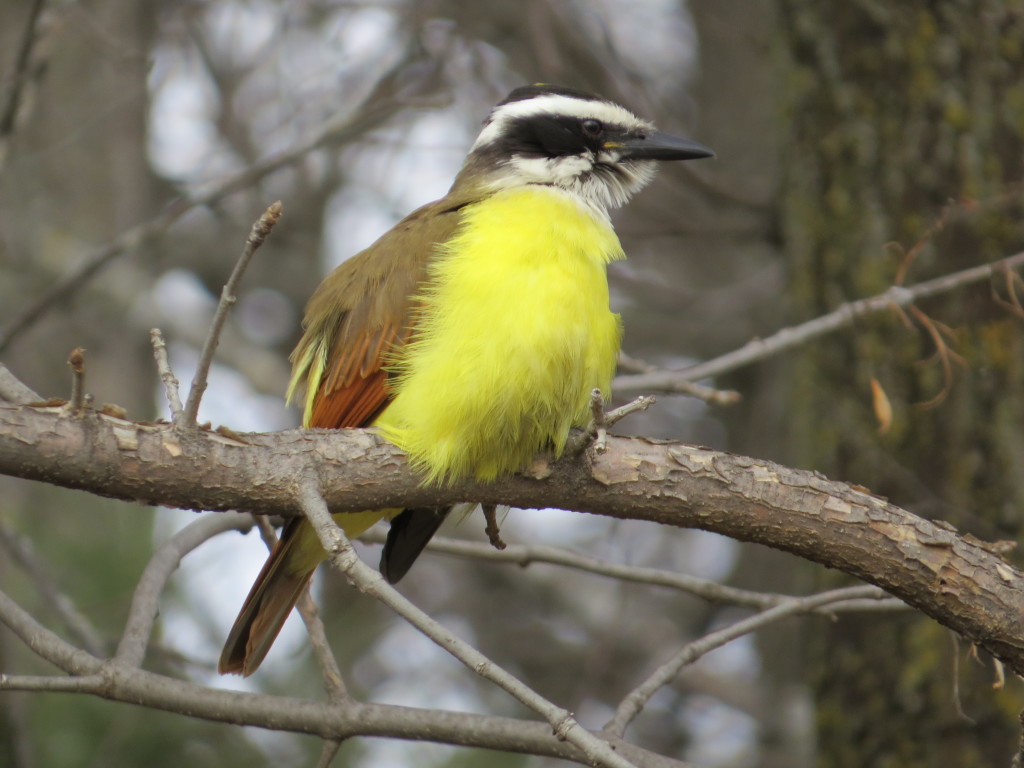
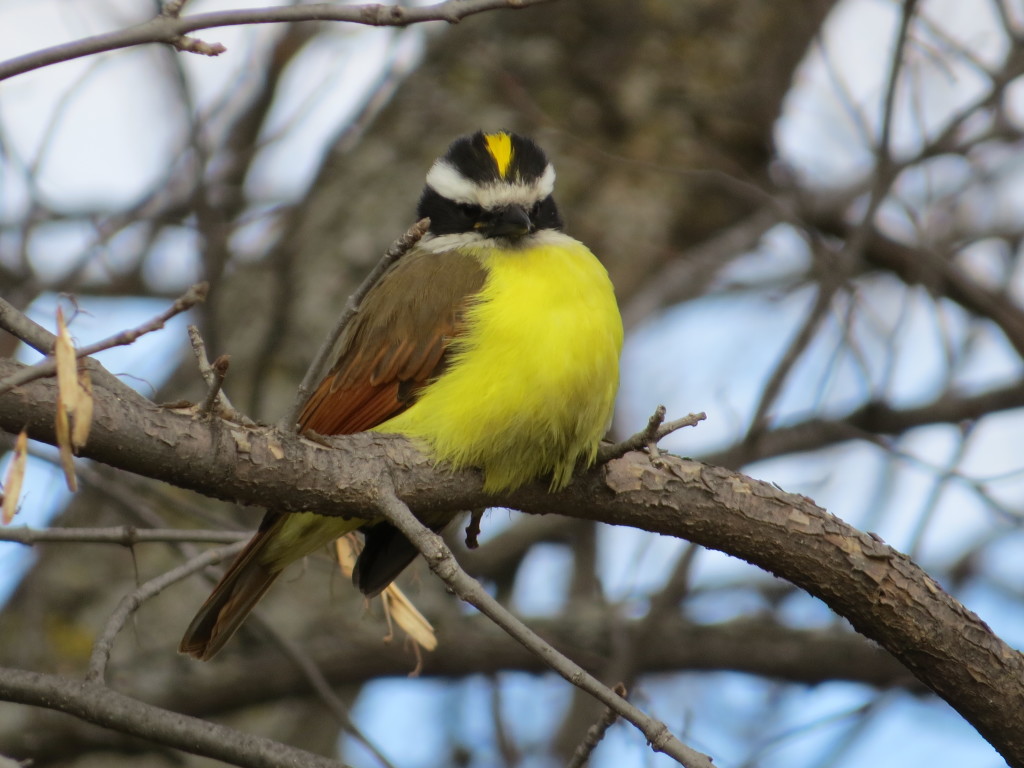 It turns out that Great Kiskadees are quite crushable, especially when they are chilly and don’t move for over 20 minutes. Either that or the diet of heavy suet and cat food has made this individual lethargic.
It turns out that Great Kiskadees are quite crushable, especially when they are chilly and don’t move for over 20 minutes. Either that or the diet of heavy suet and cat food has made this individual lethargic.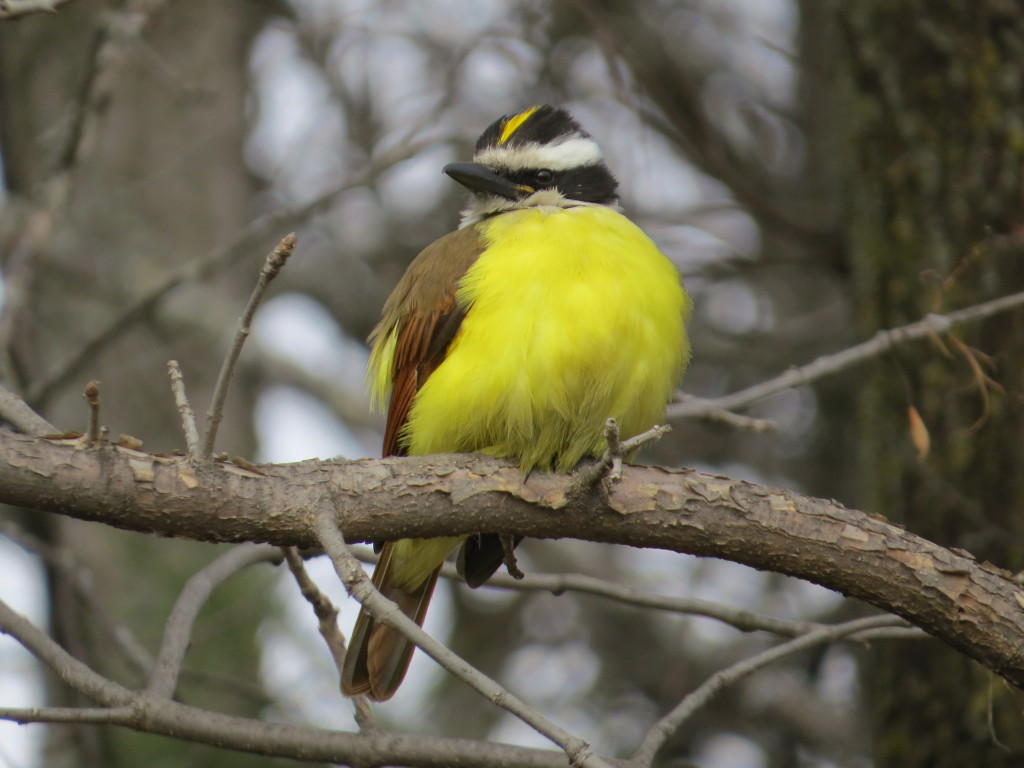
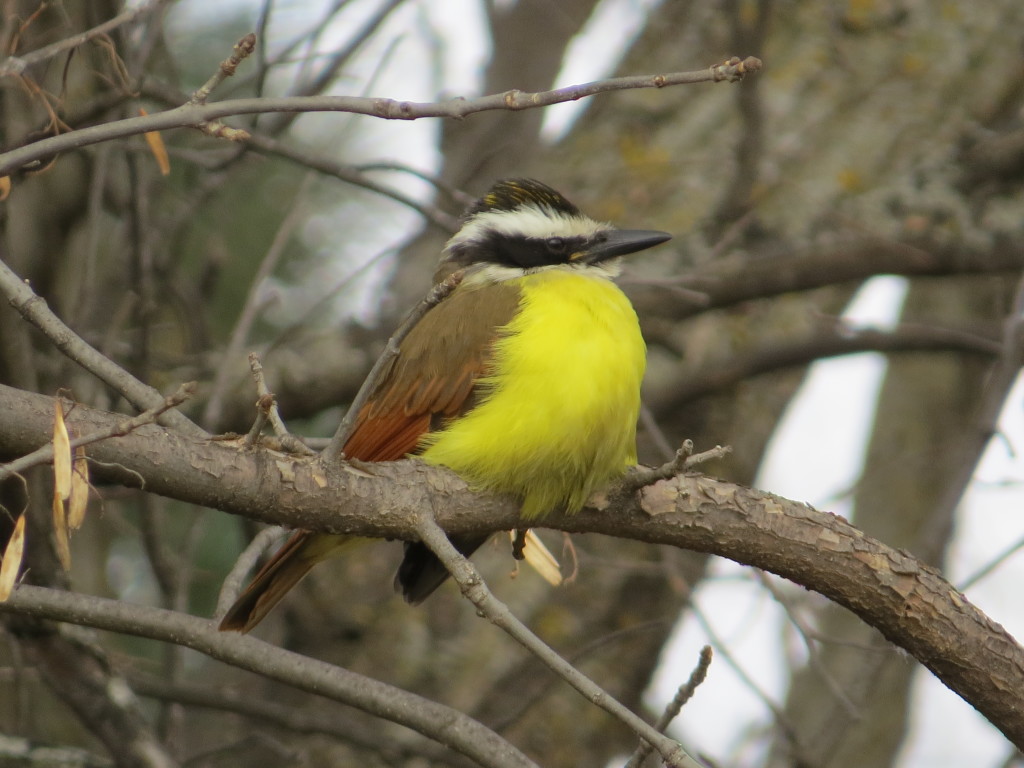 What a month it’s been with Arizona birds and Texas birds popping up in the north. I know I owe you some more AZ coverage in the next post, but first we’re going to have to take a look at my last ever triple lifer day in Minnesota. Buckle up, Larus fans.
What a month it’s been with Arizona birds and Texas birds popping up in the north. I know I owe you some more AZ coverage in the next post, but first we’re going to have to take a look at my last ever triple lifer day in Minnesota. Buckle up, Larus fans.